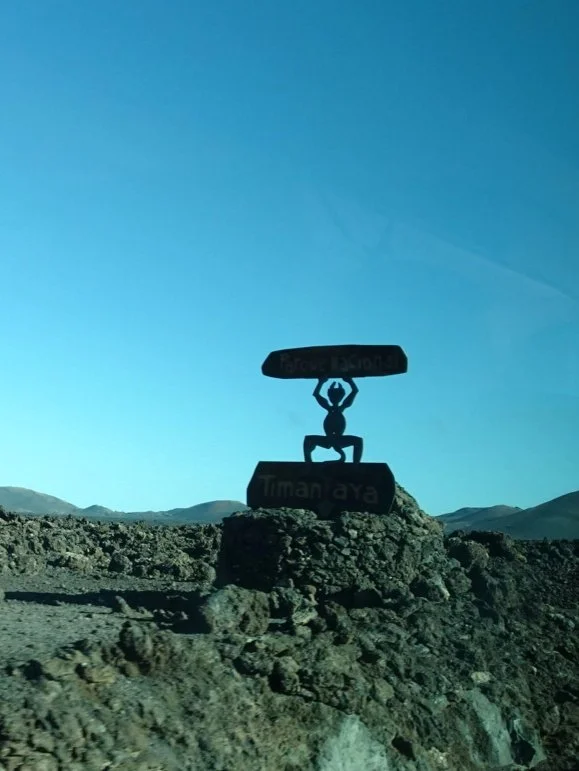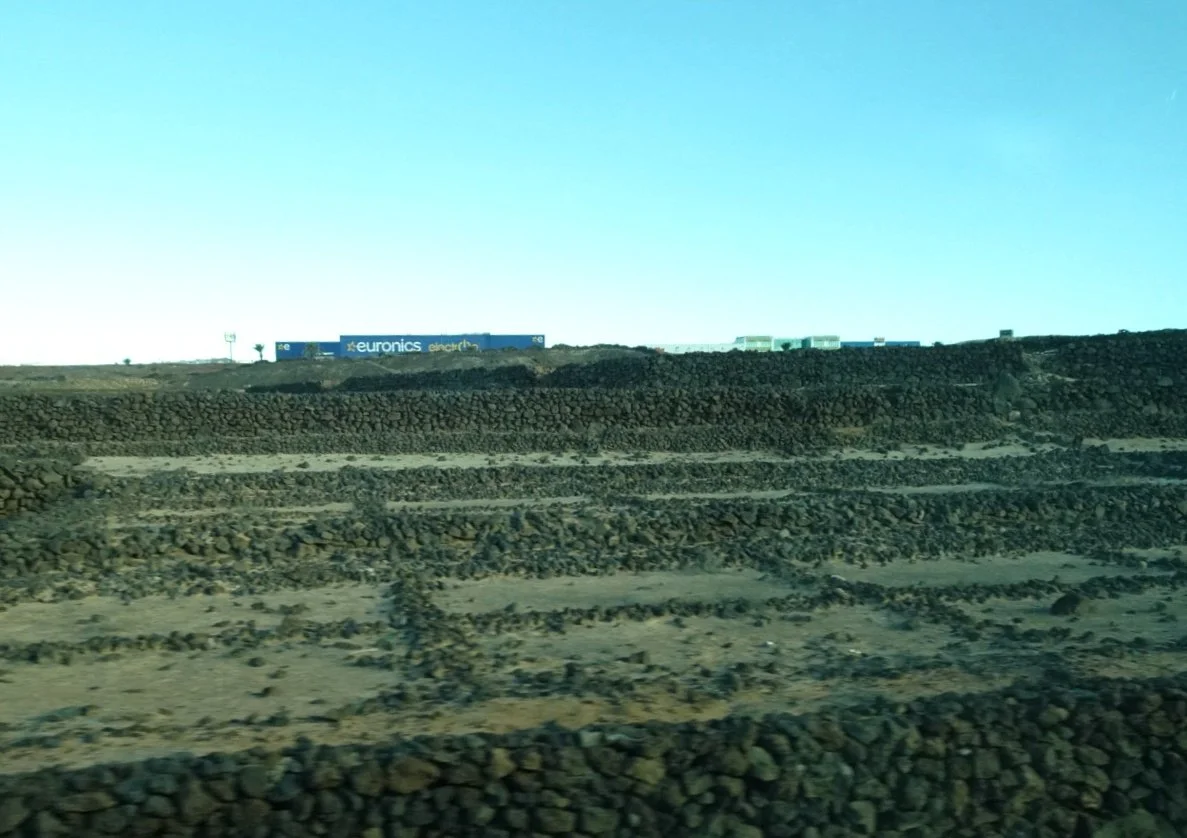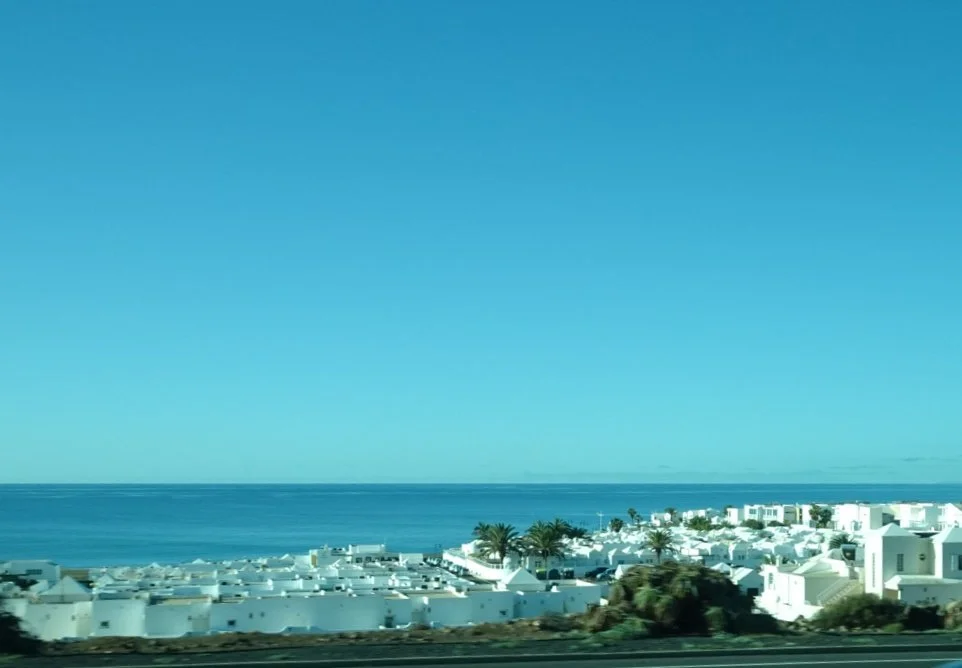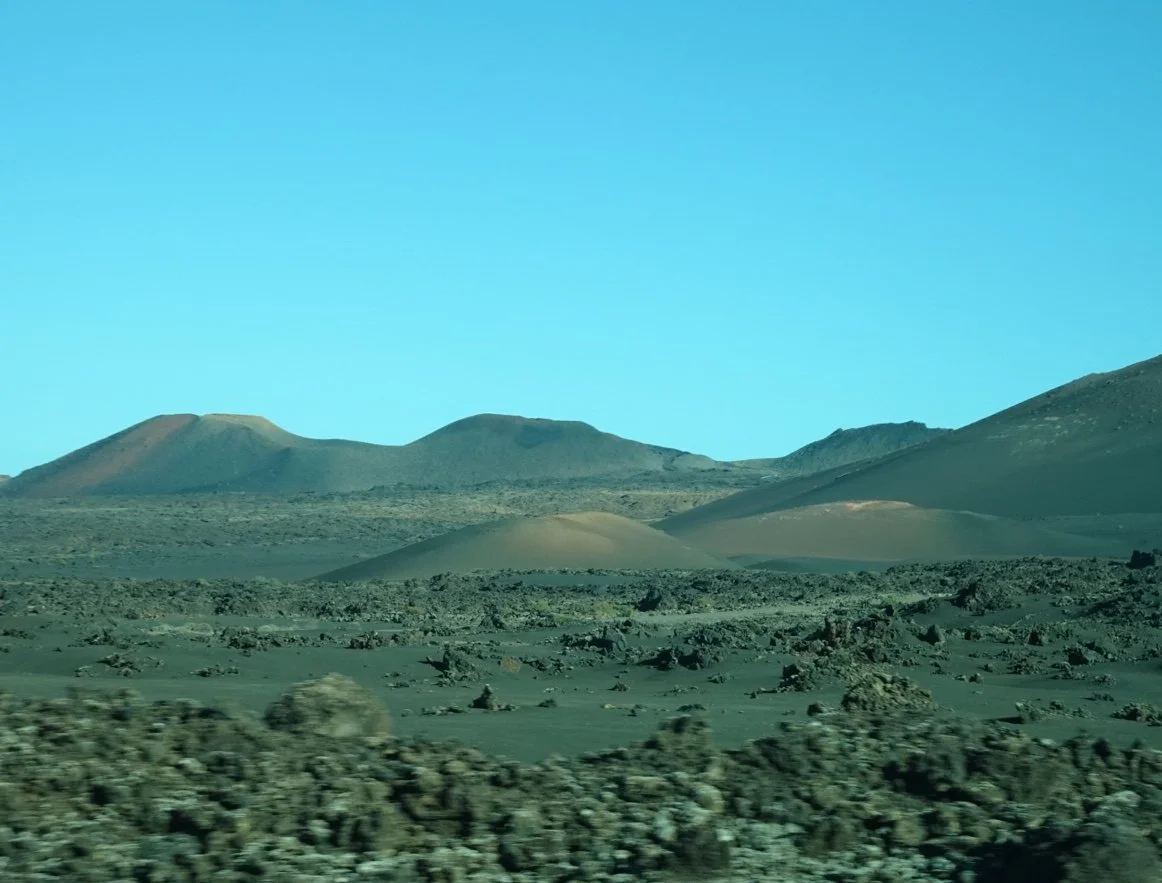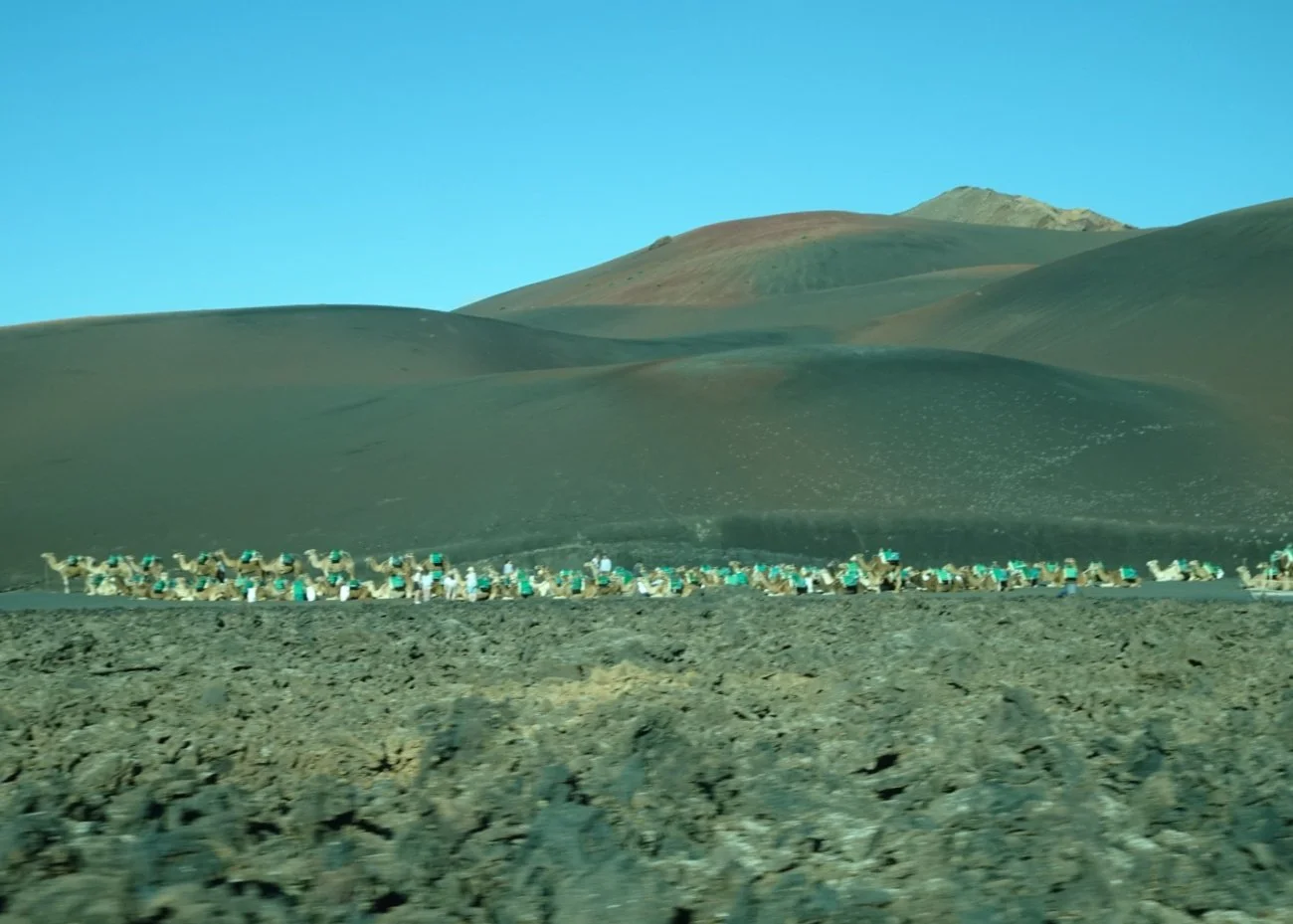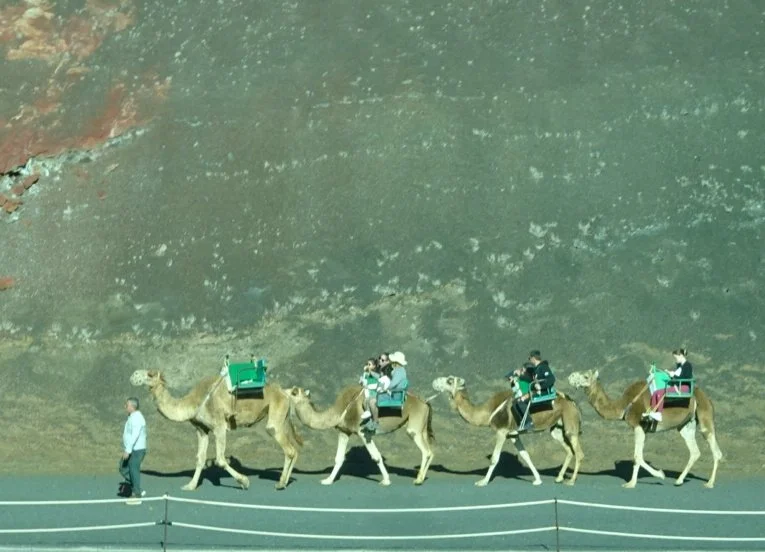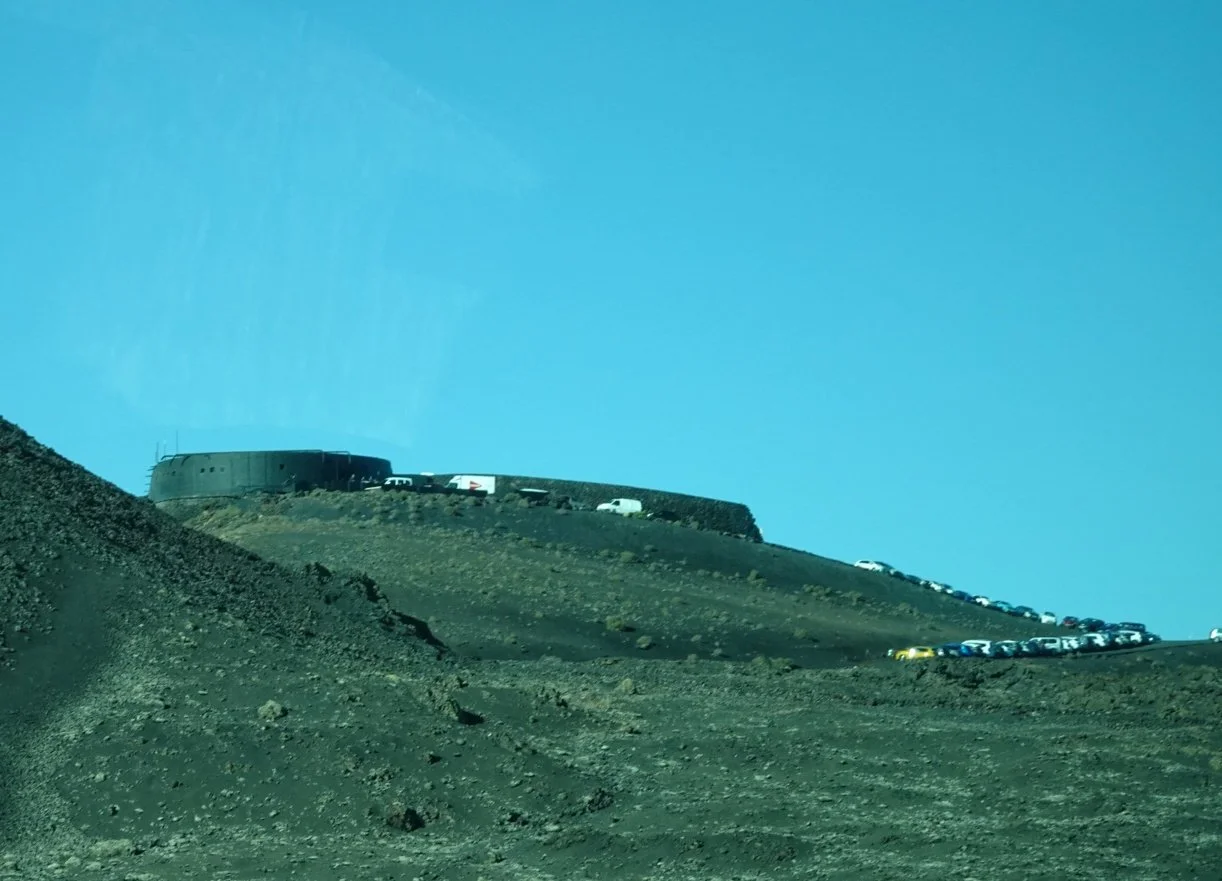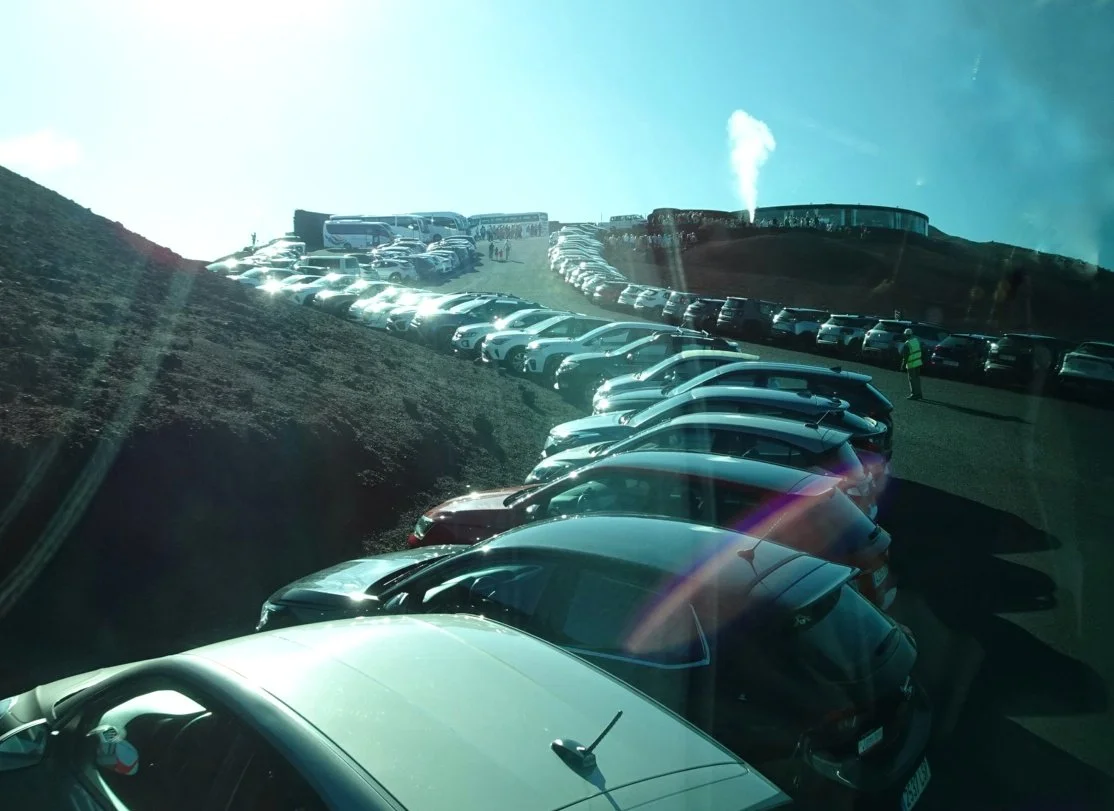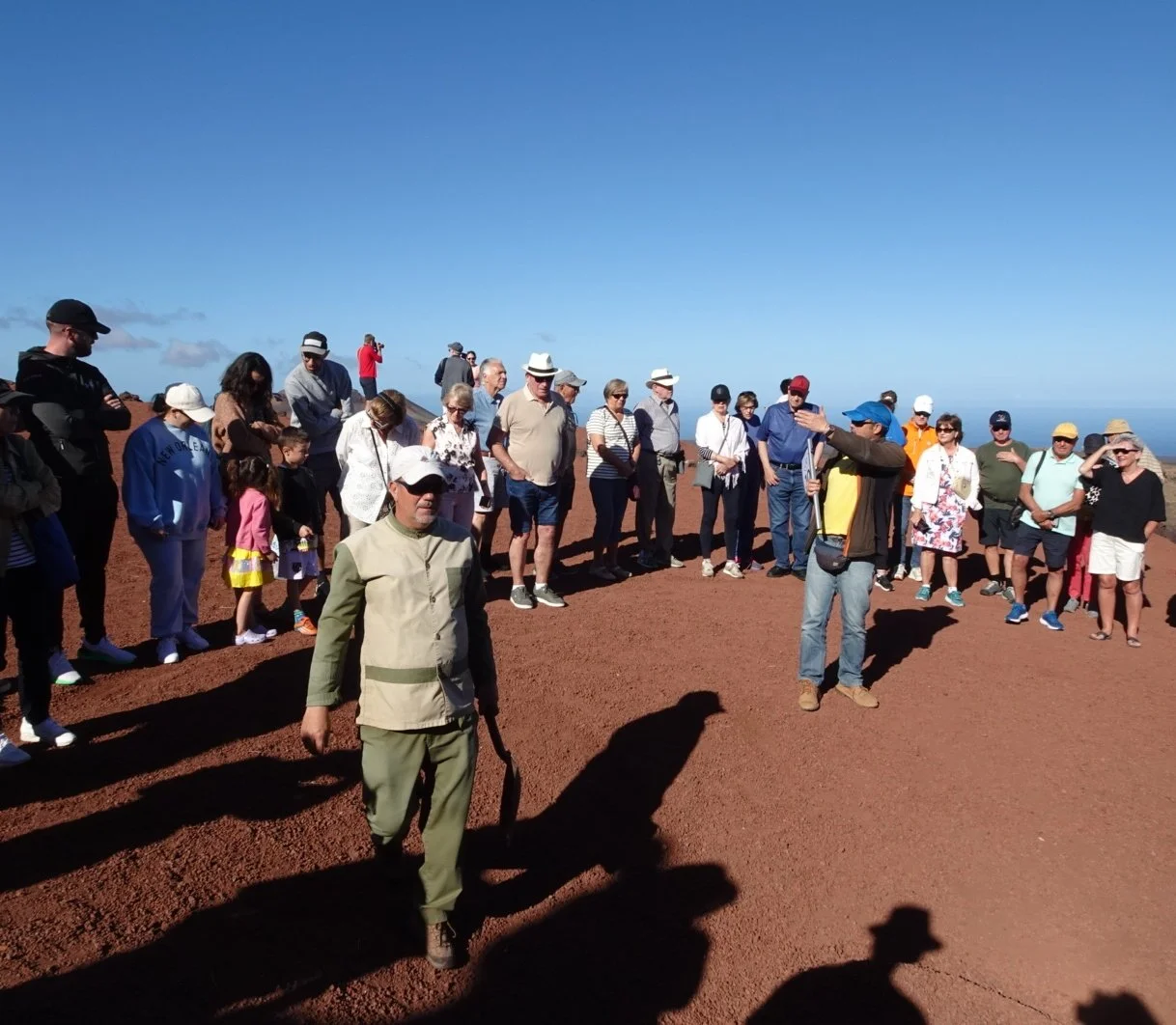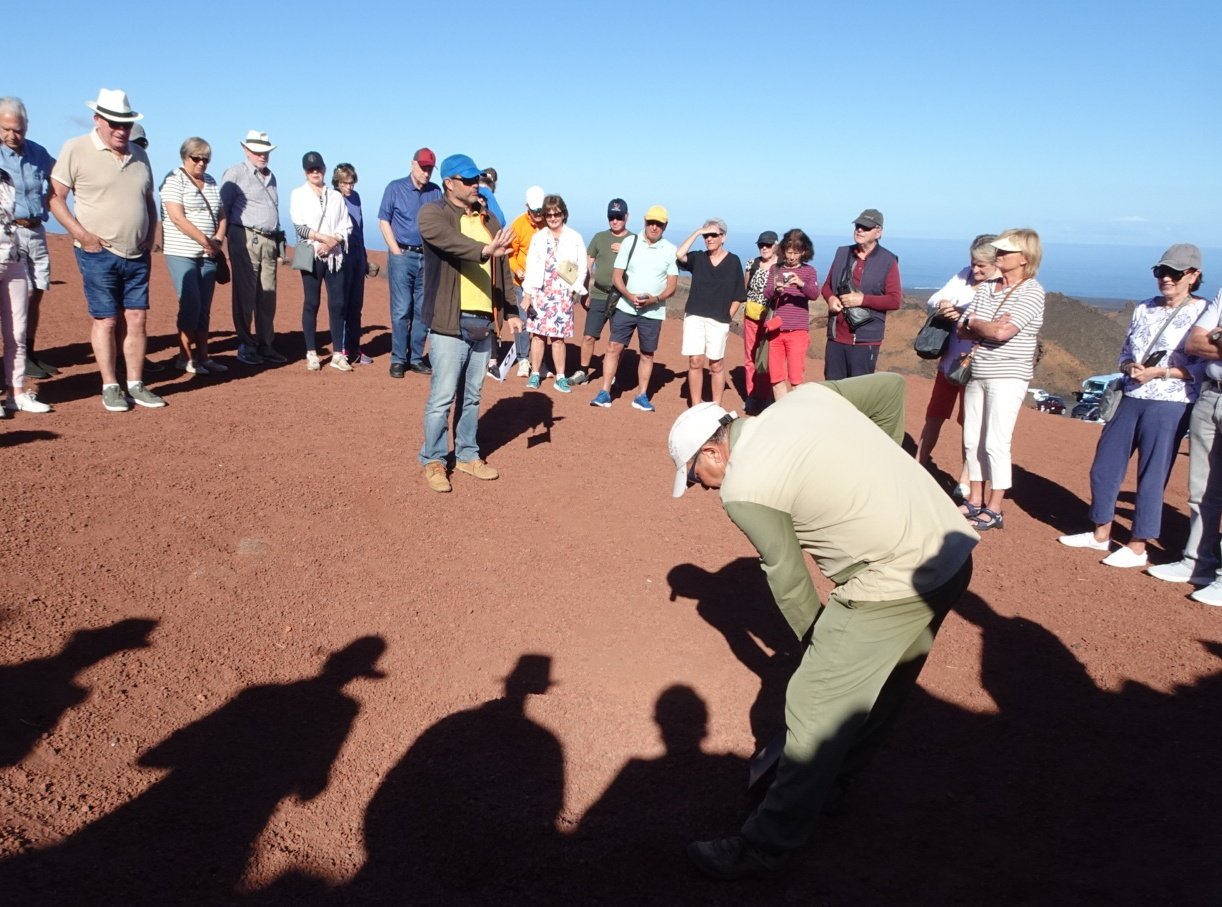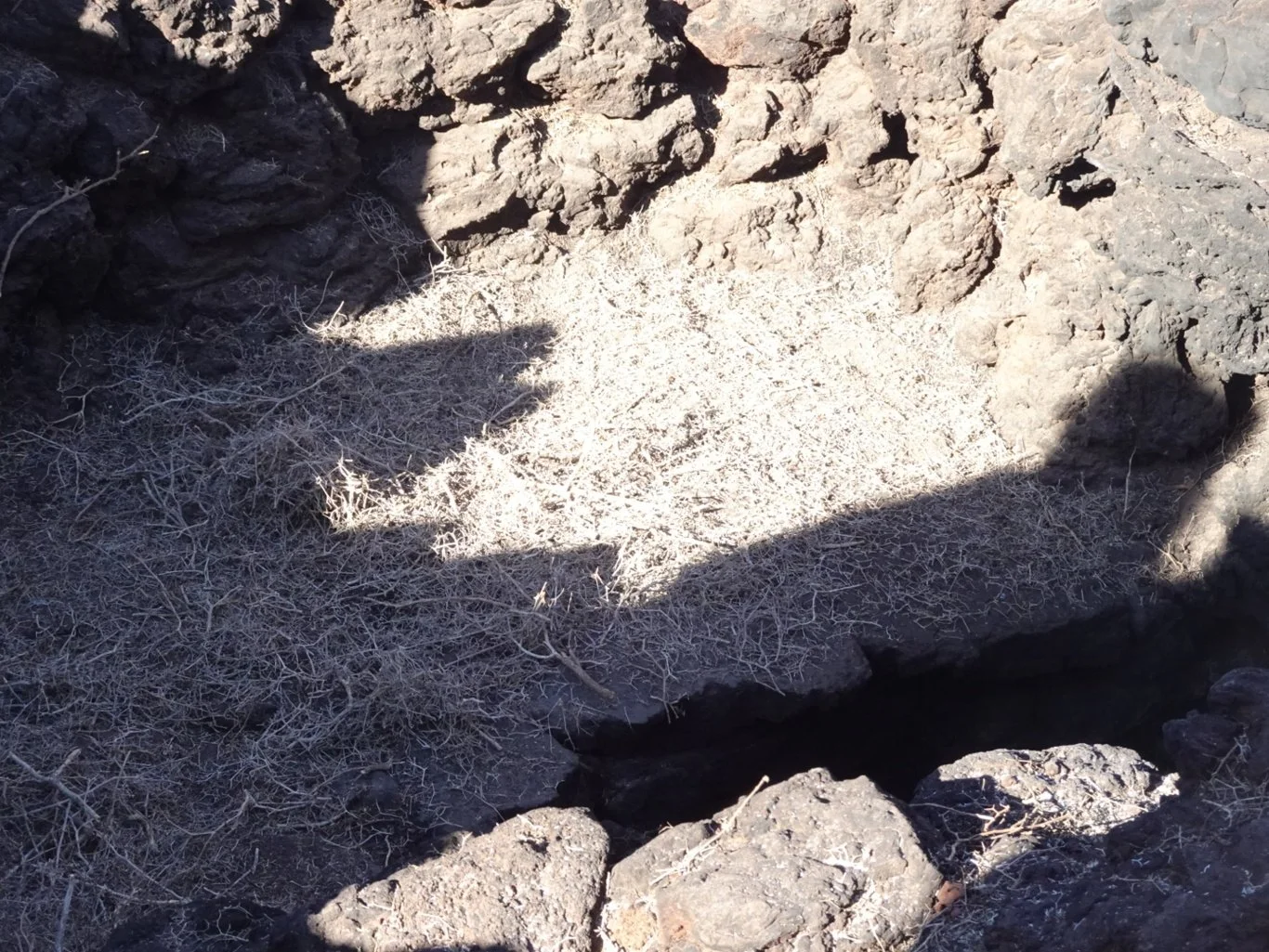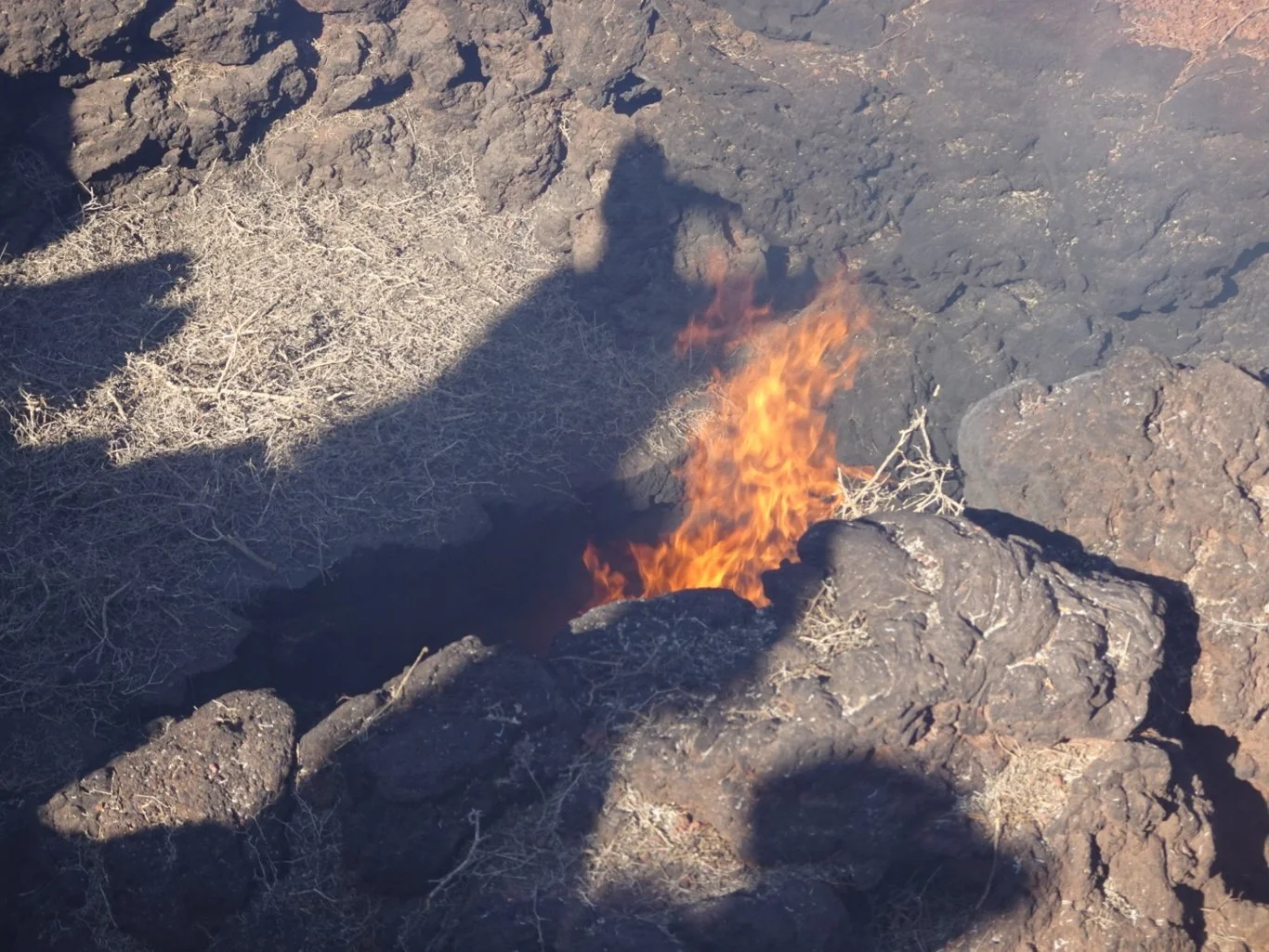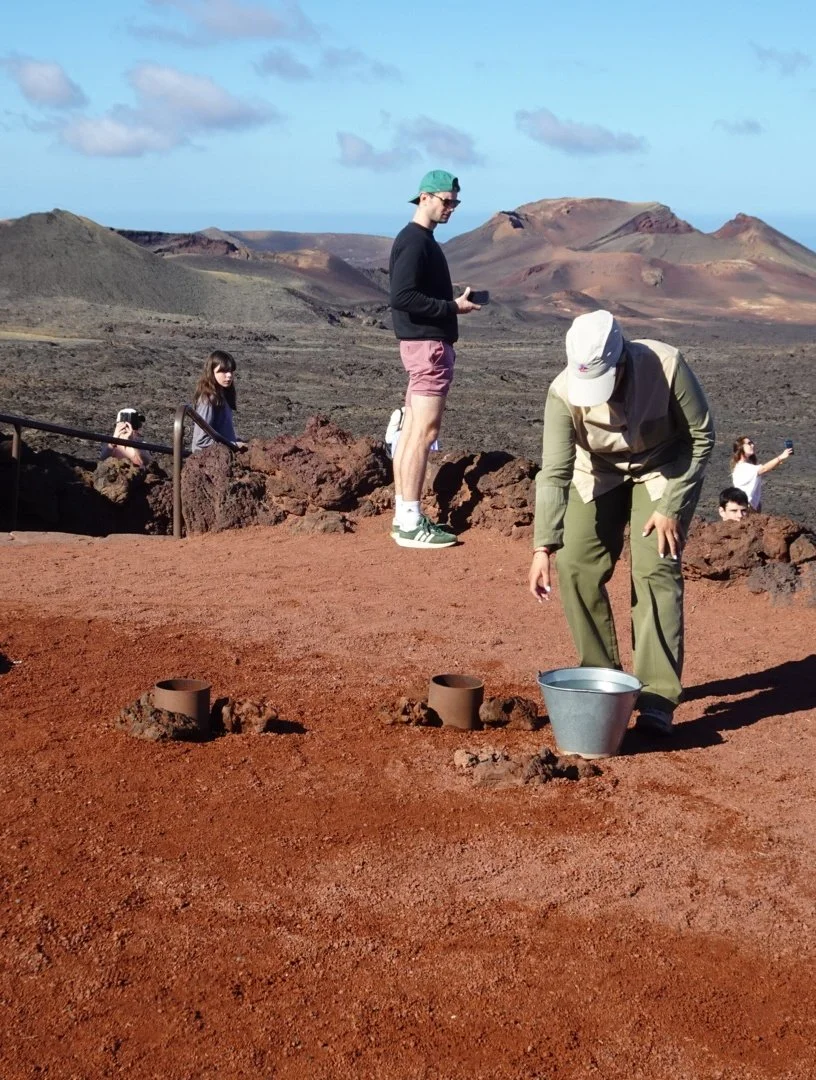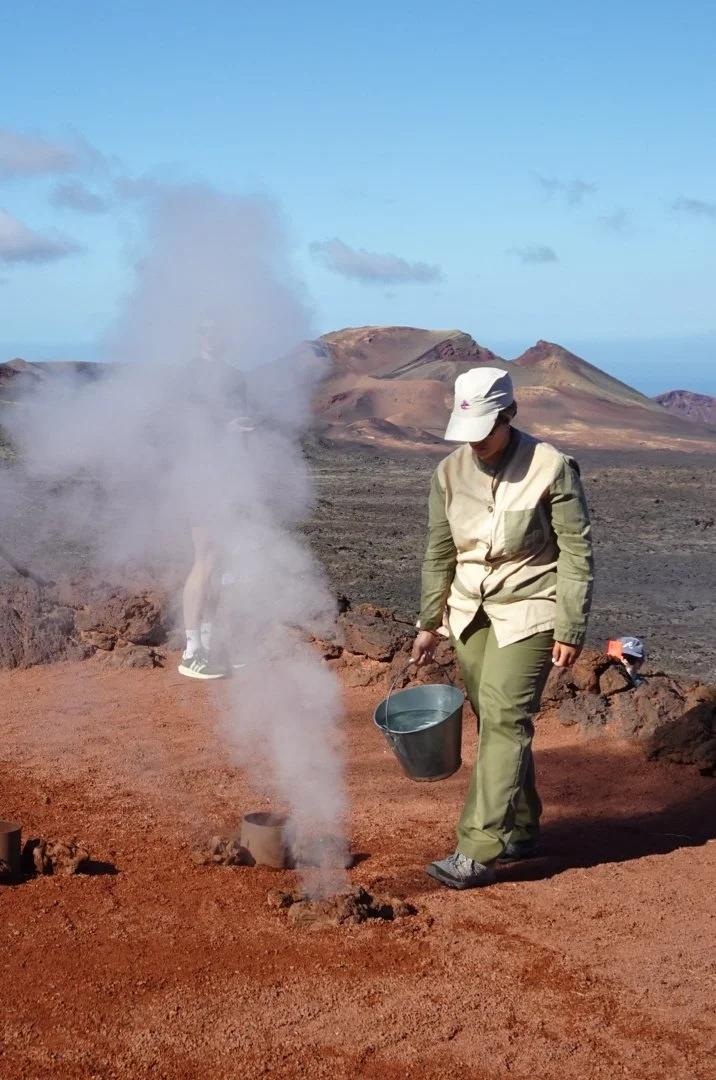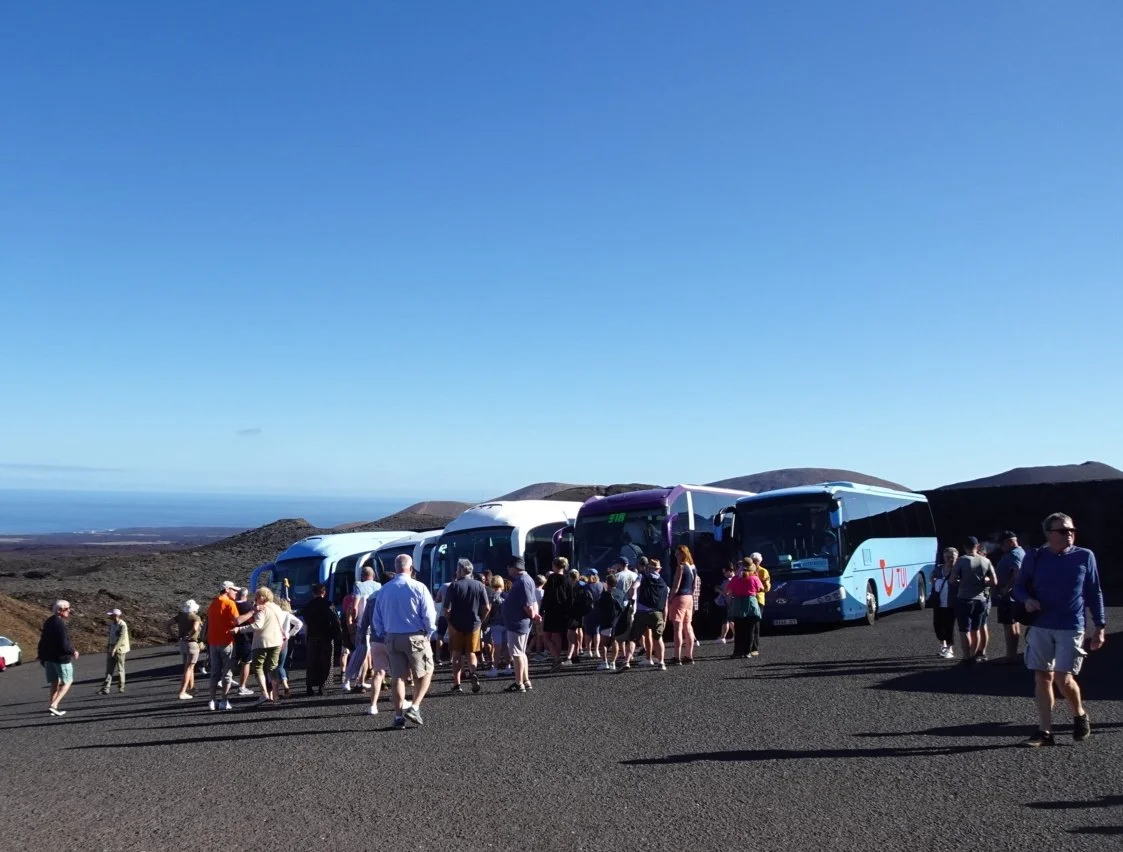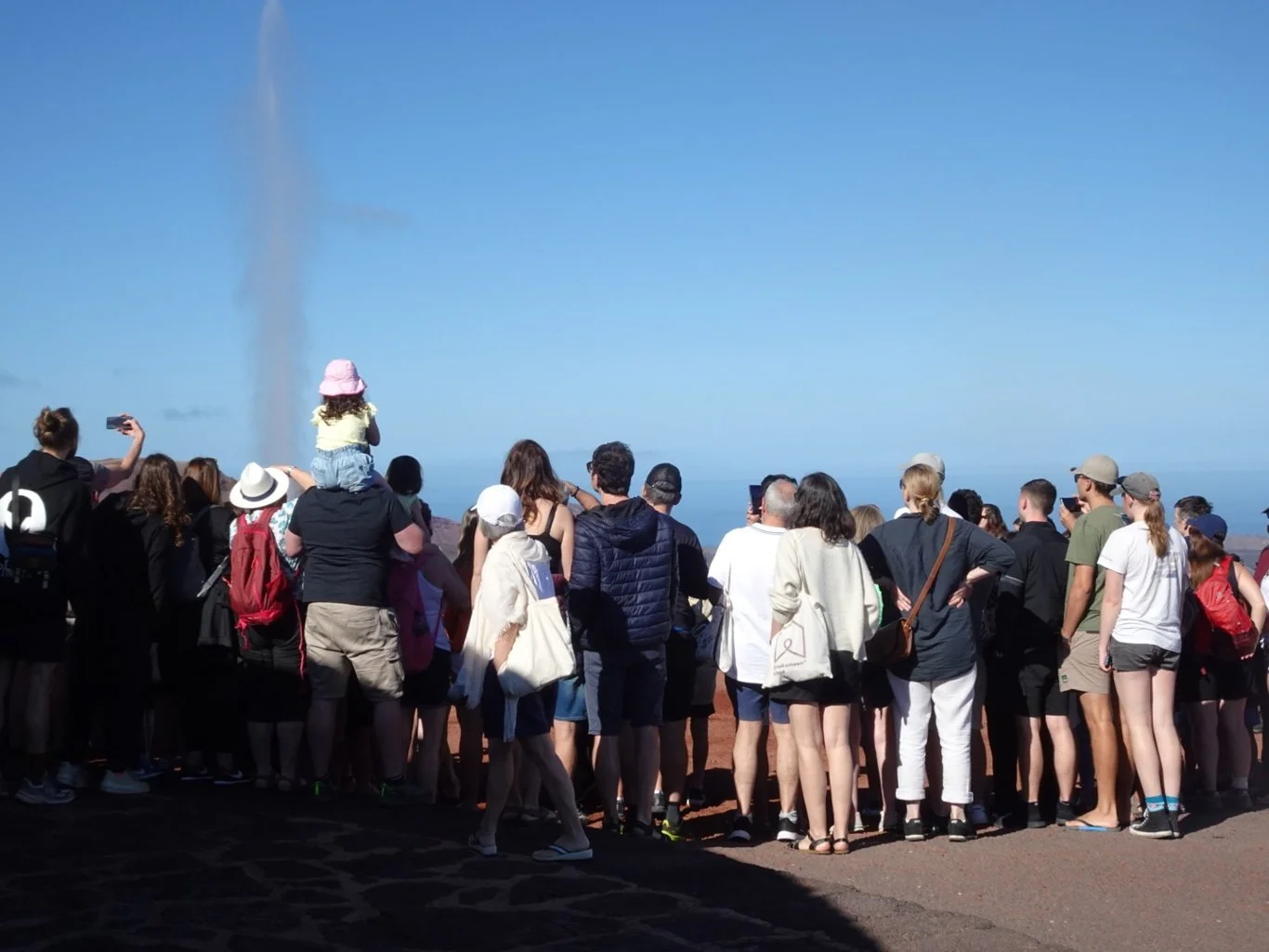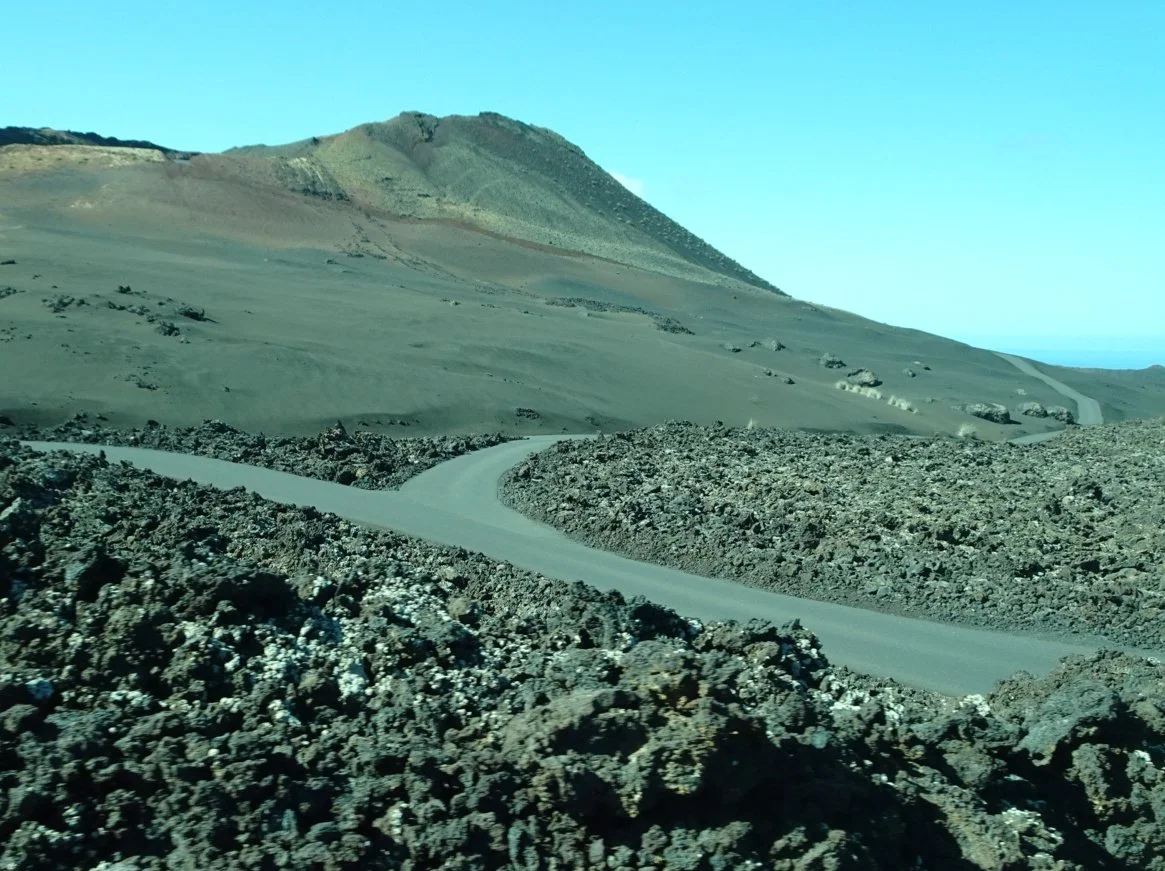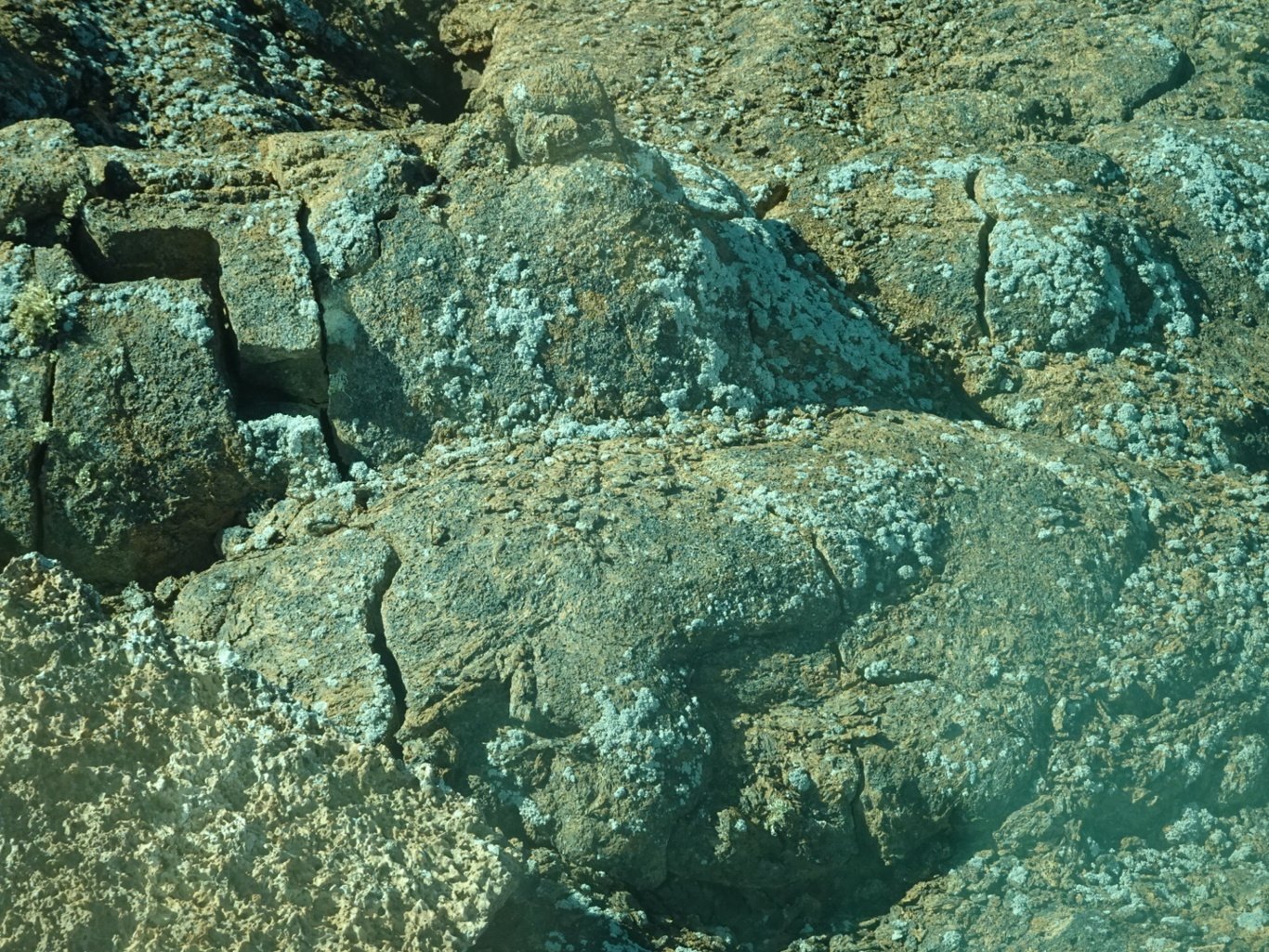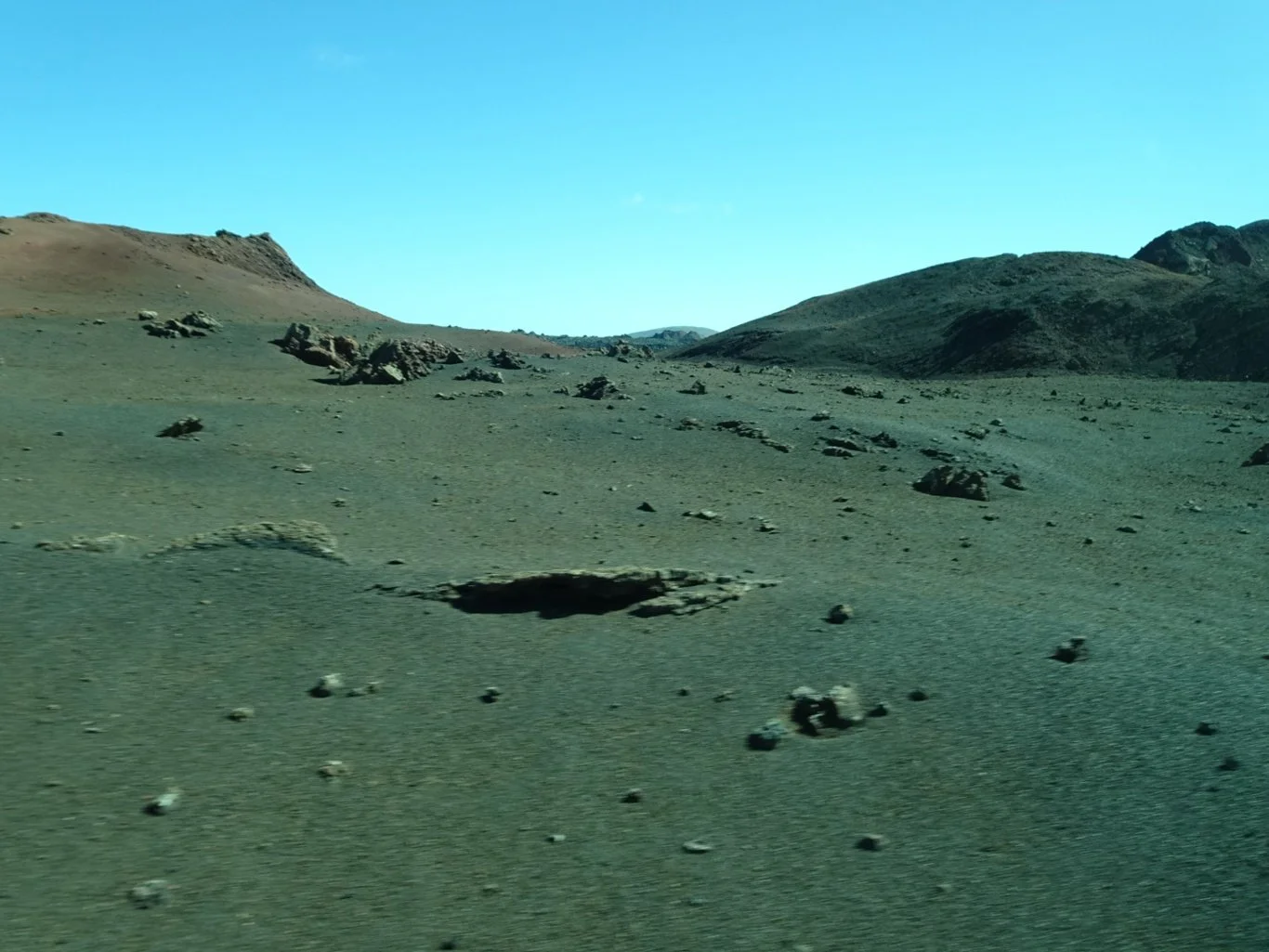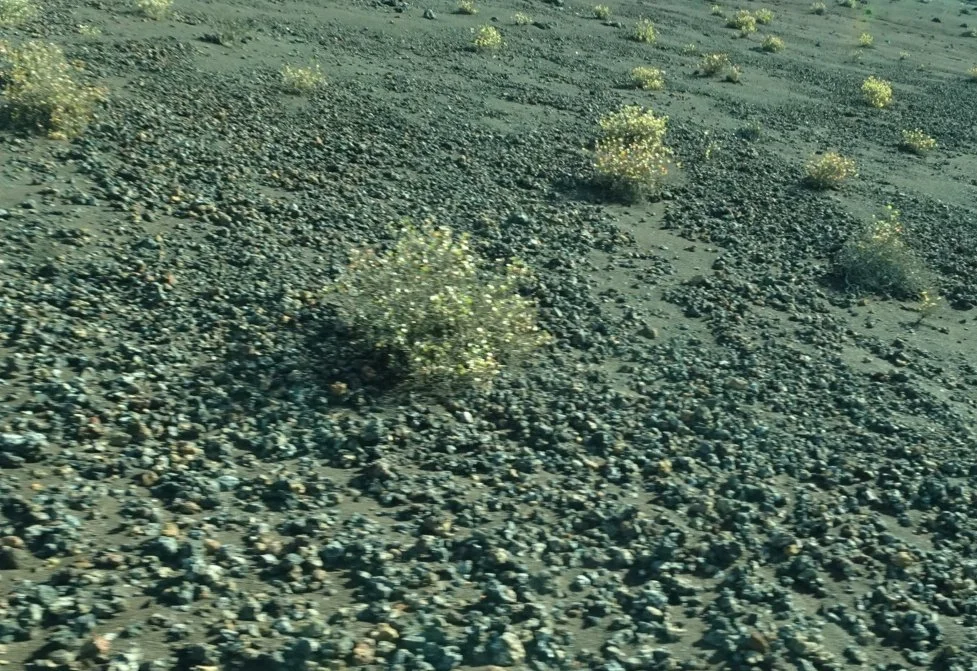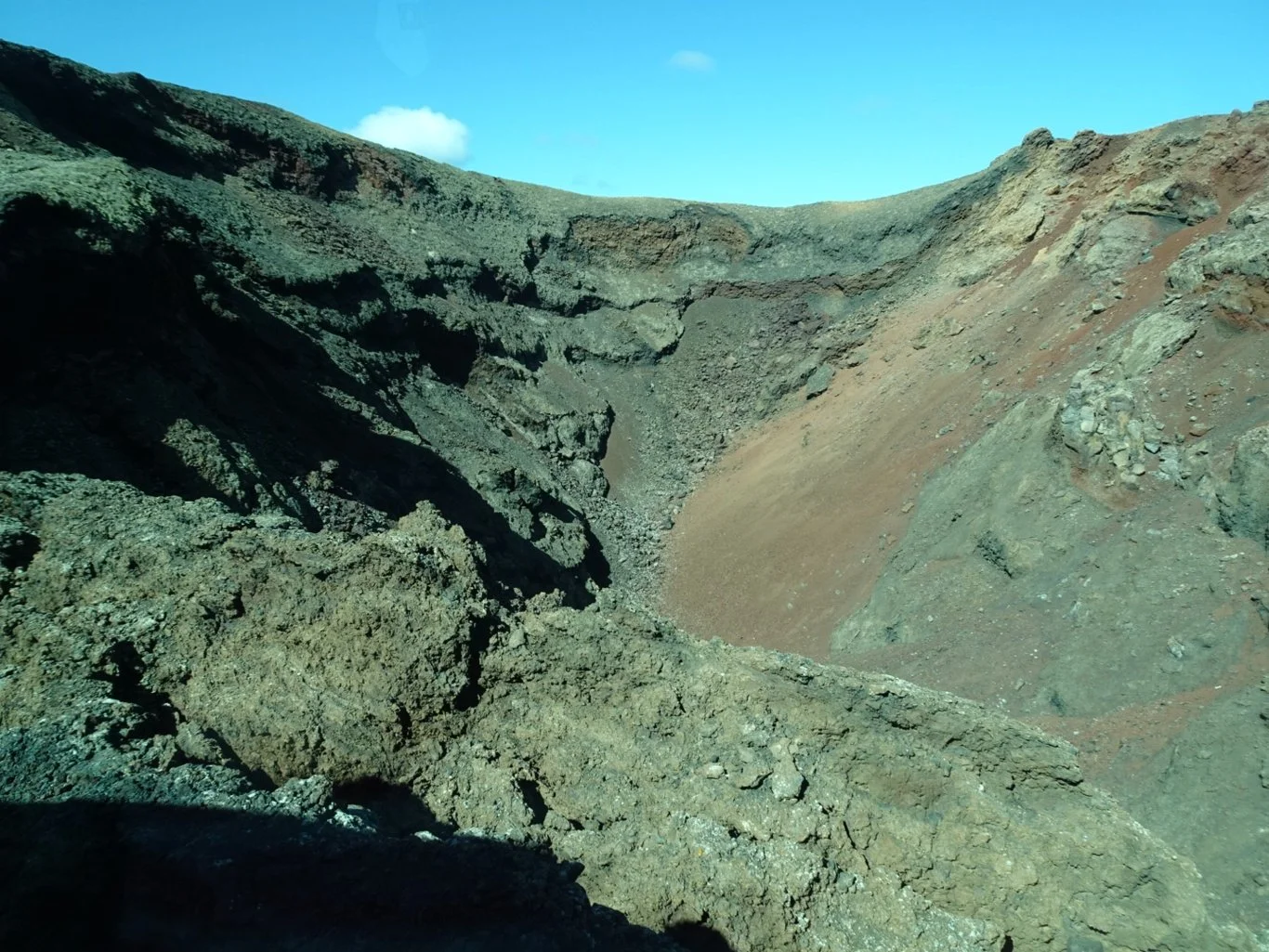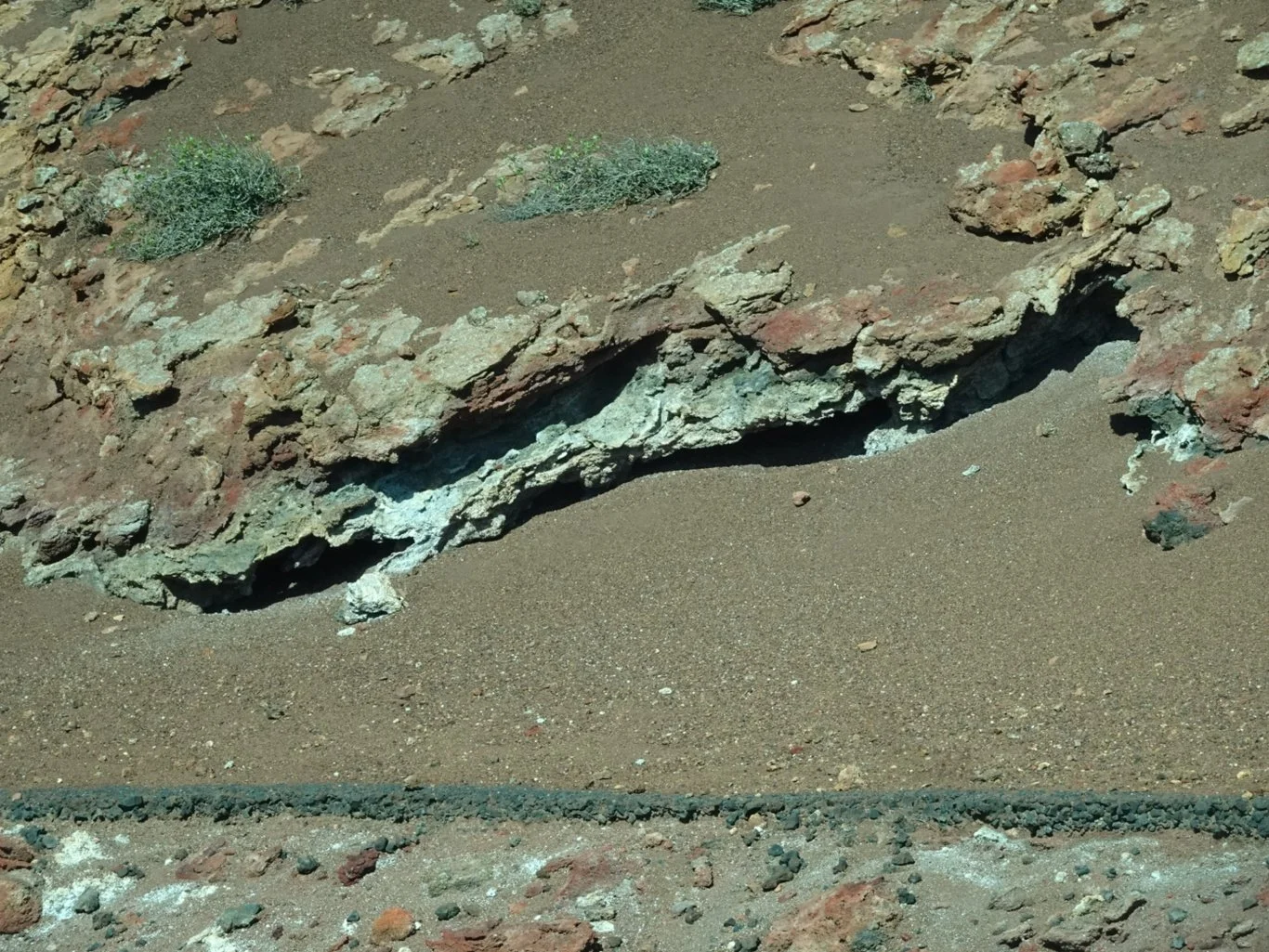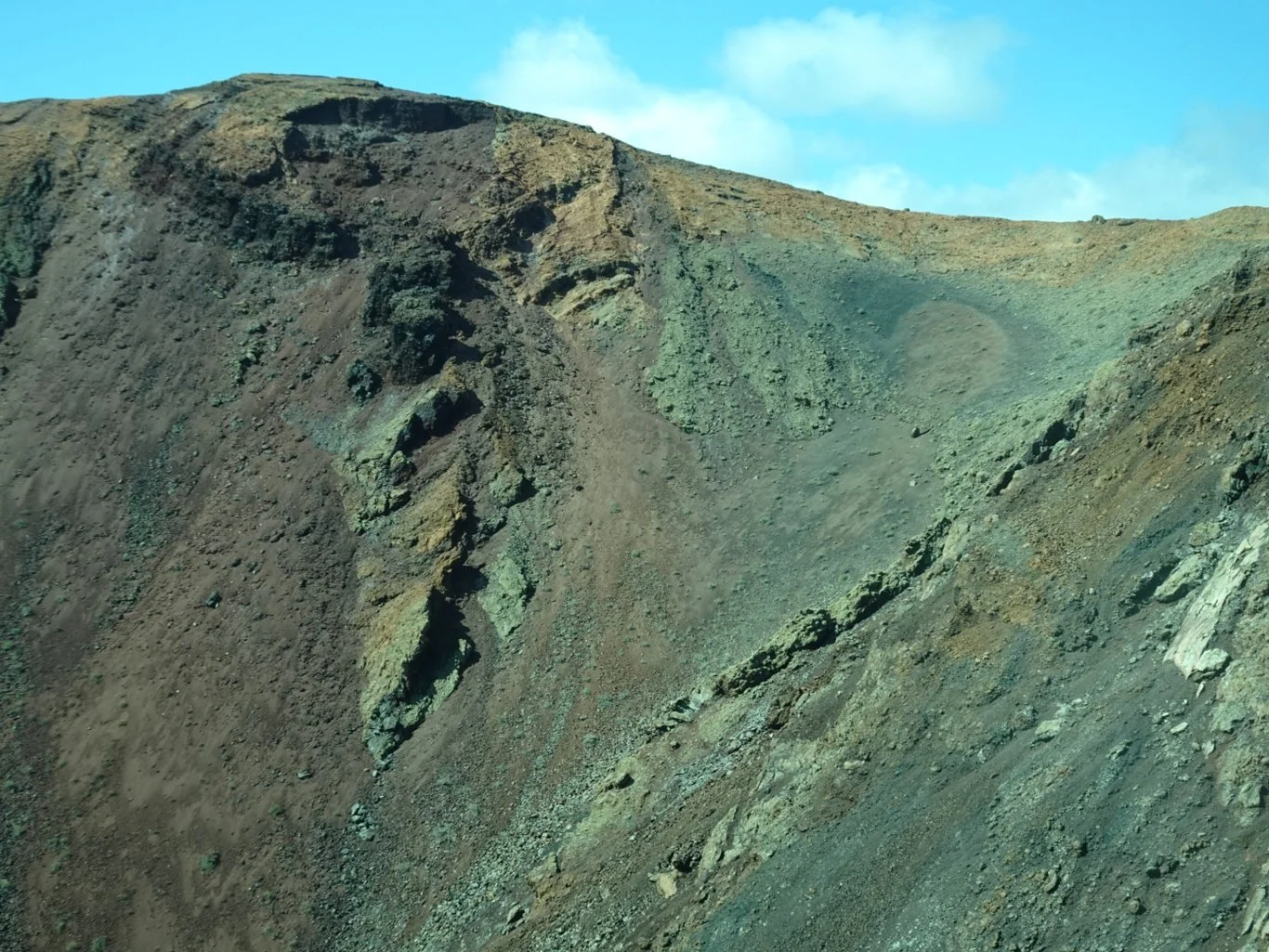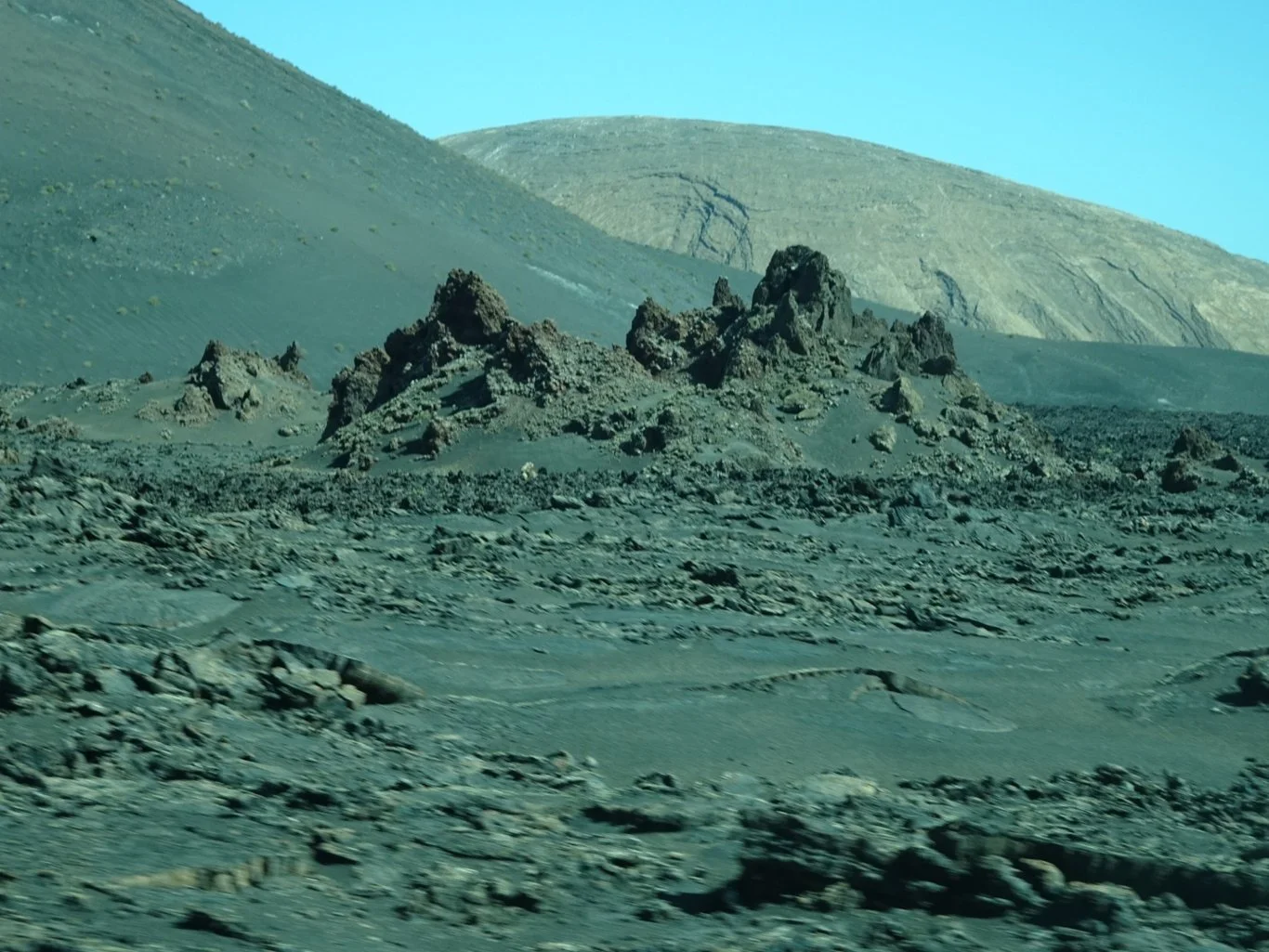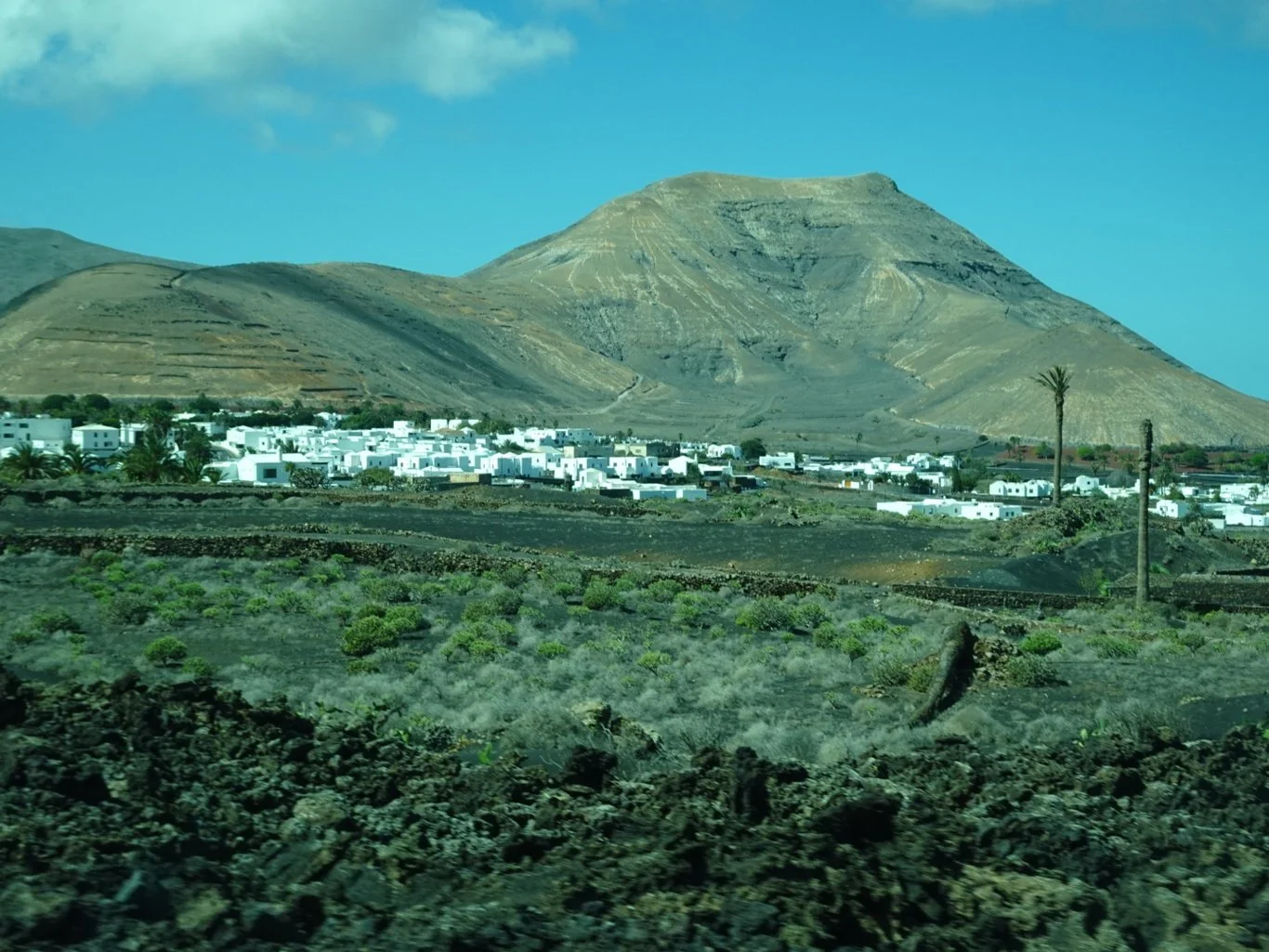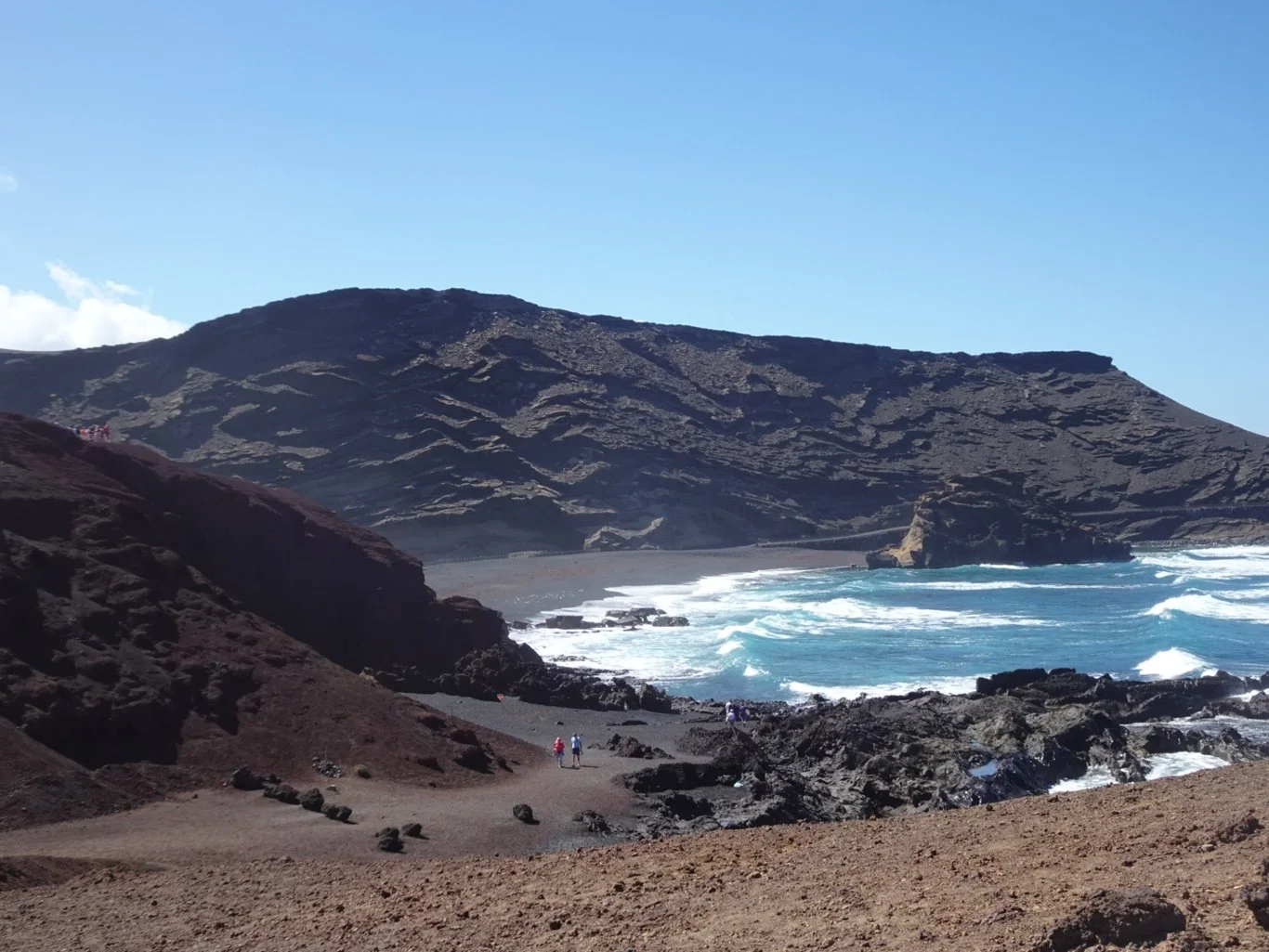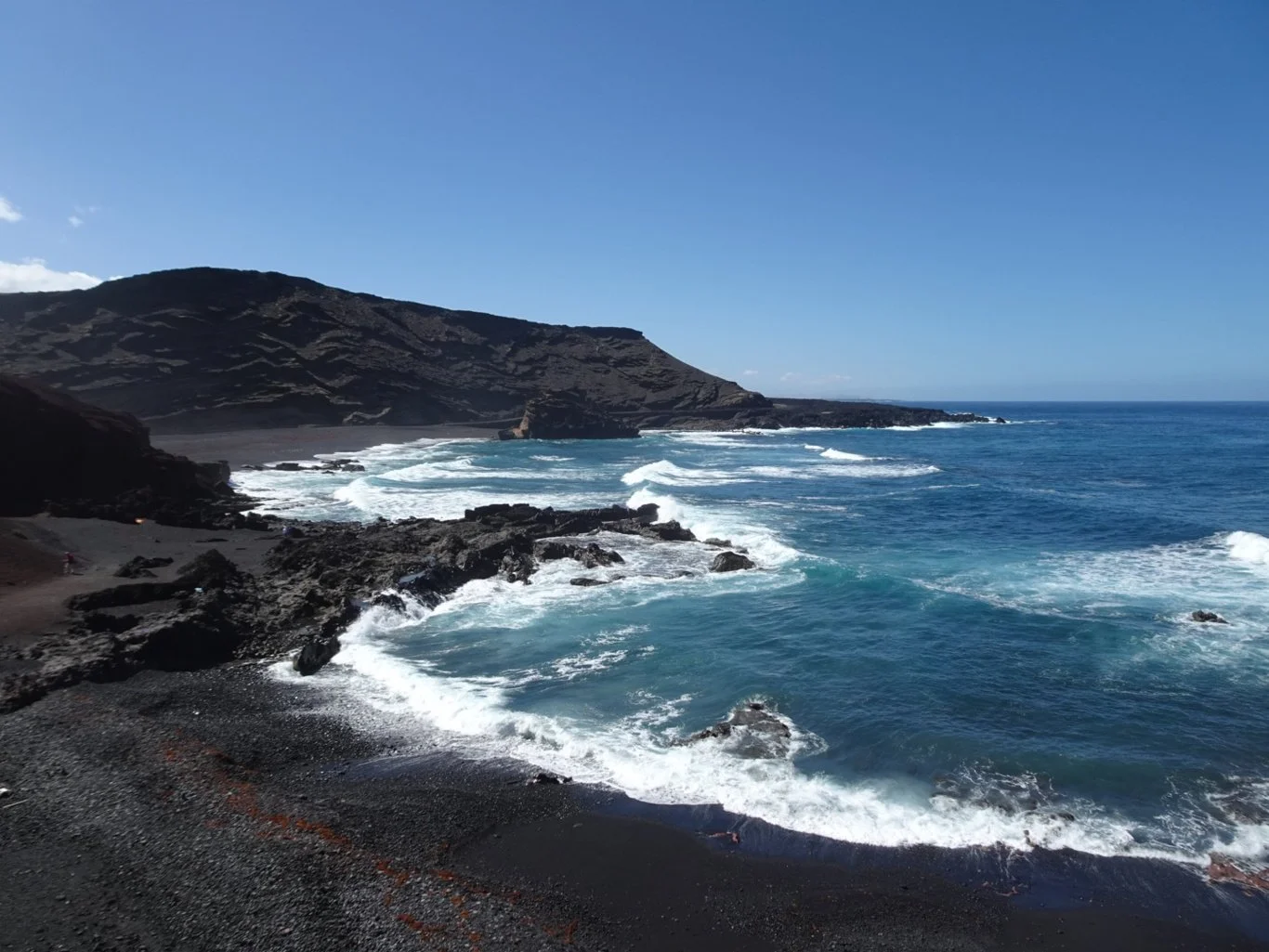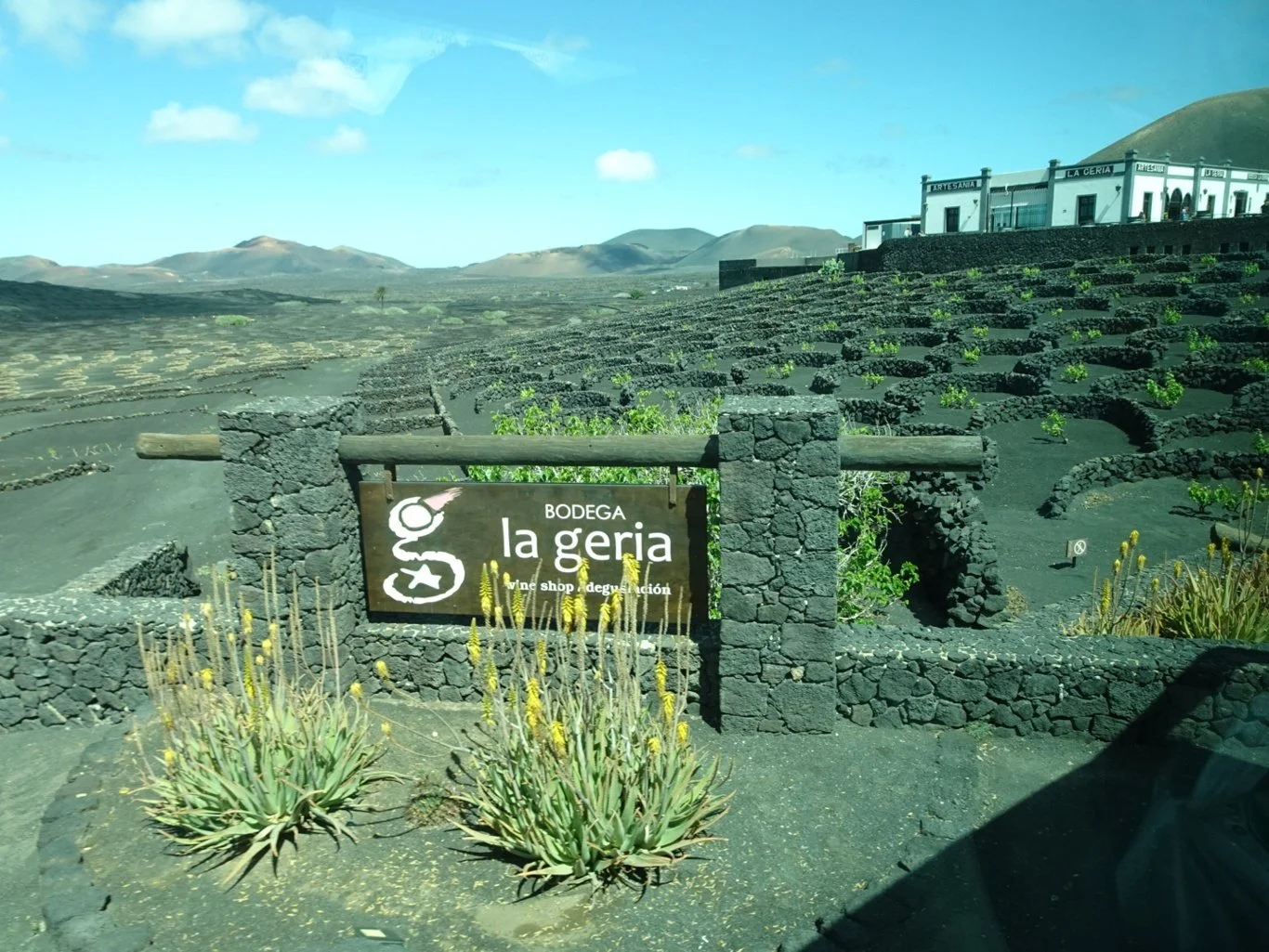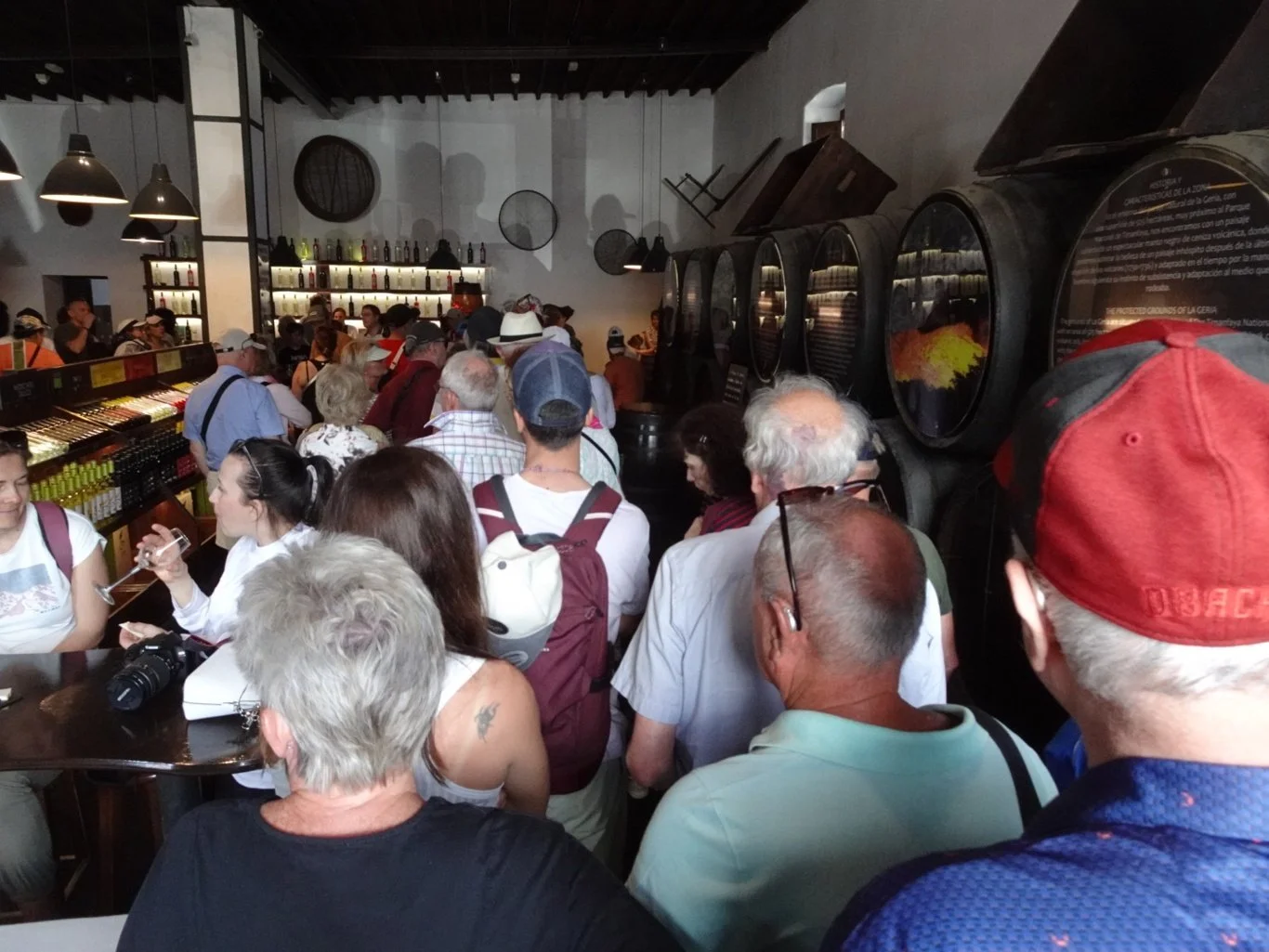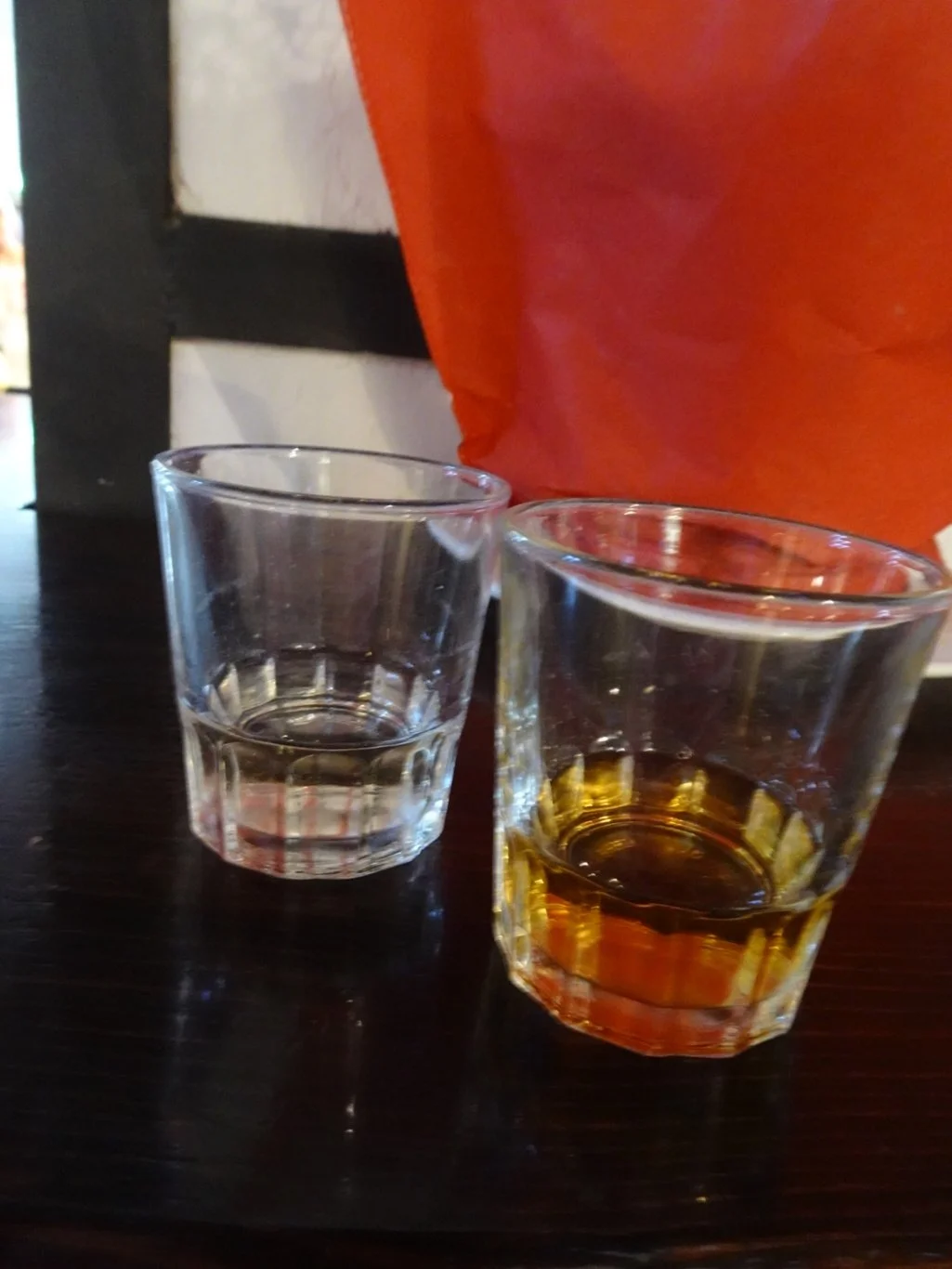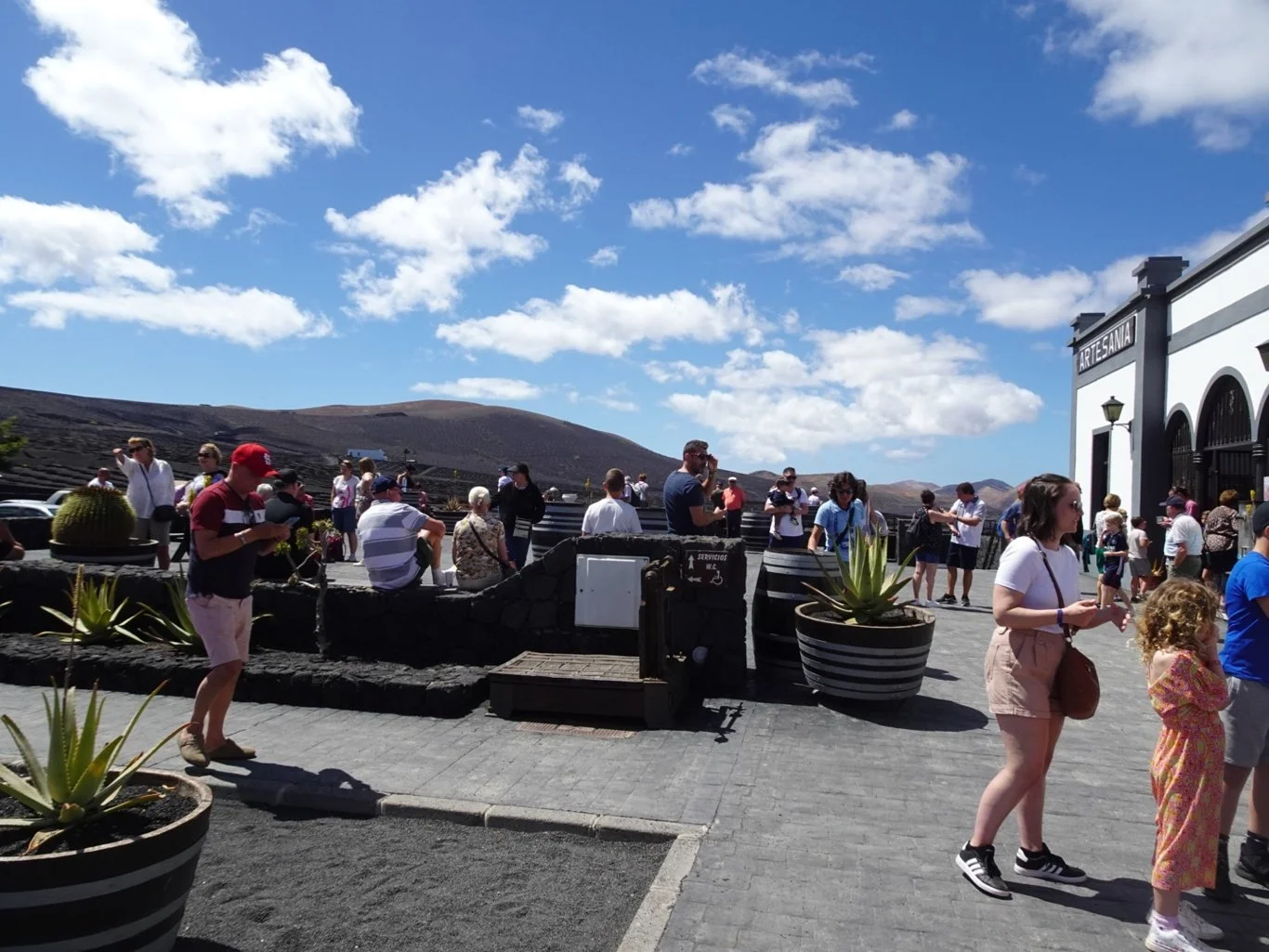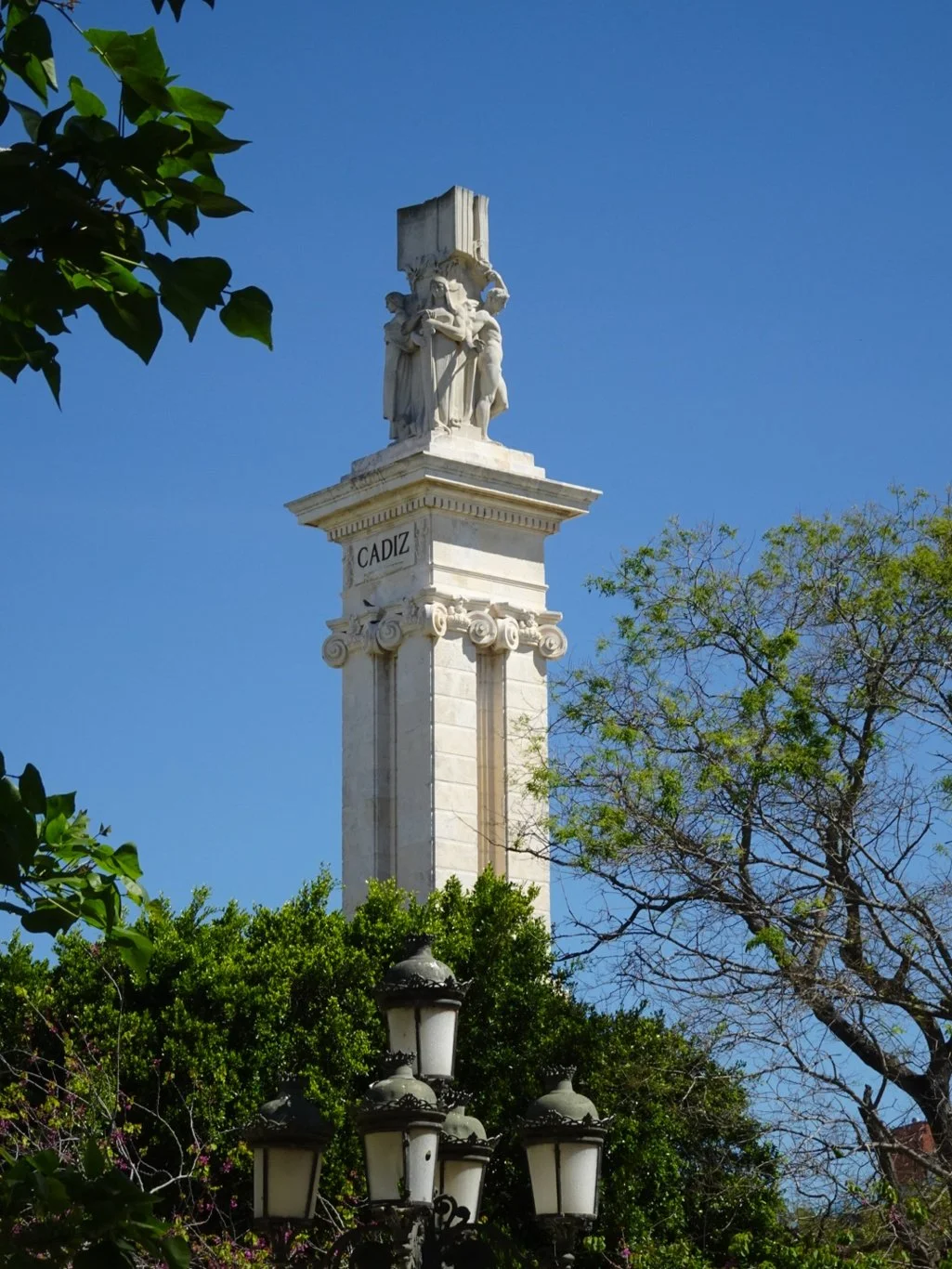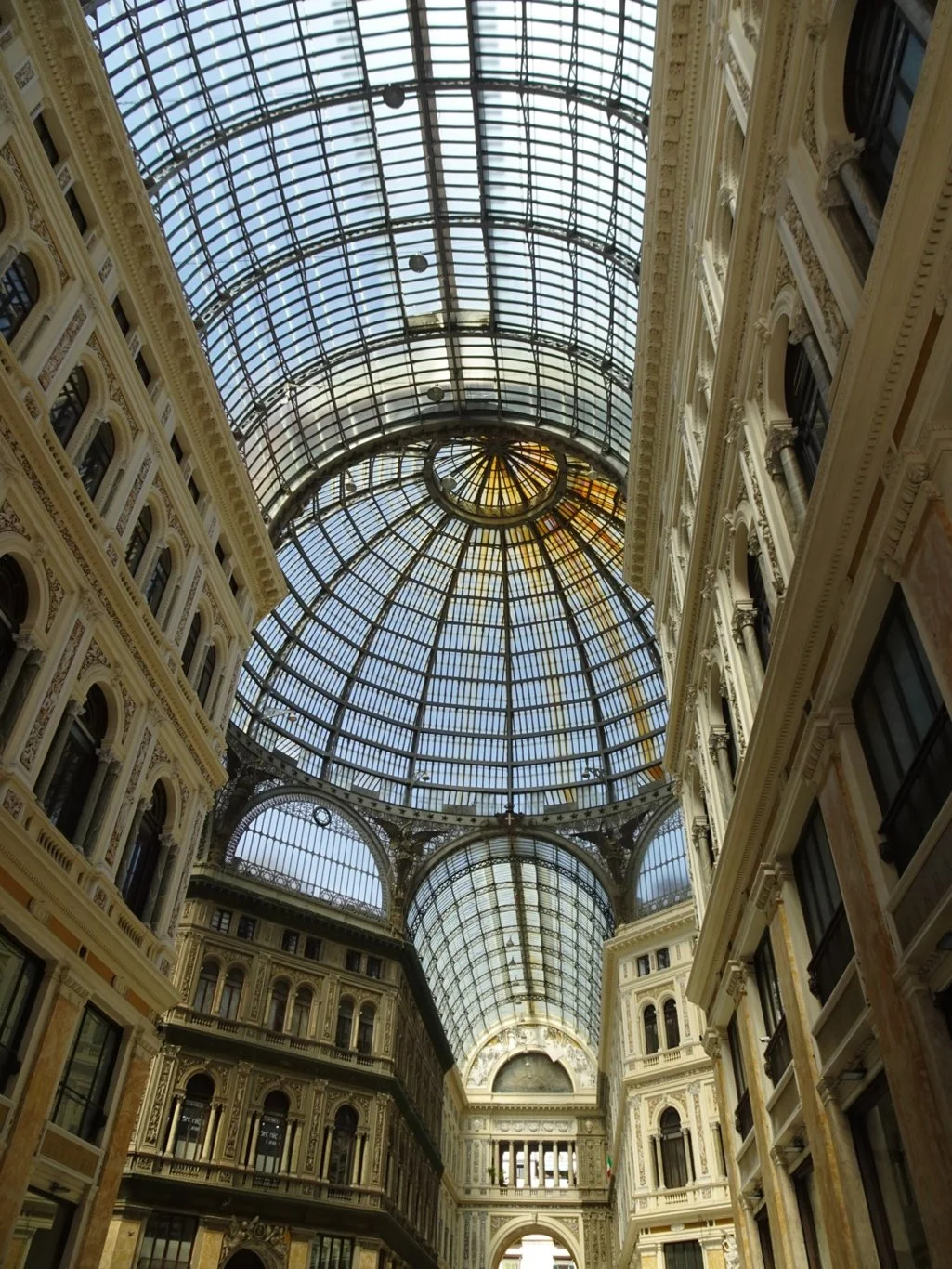Another volcanic landscape
We are in Lanzarote today, docked in Arrecife.
We'd chosen the tour to the National Park, thinking that it would be an opportunity to get a look around the island. We've not been here before.
Just outside the port gates Bernardo, our guide, pointed out the stony rectangles built into the land we were passing. These were the former salt flats, used to create the essential ingredient for preserving fish. Sadly, that industry is no longer a mainstay of this area and the warehouses are now used for music festivals and the like. I couldn't help thinking that the aroma will surely have outlived their original purpose however!
Just as in mainland Spain, the roads here are great quality and we were soon heading inland, towards those extinct volcanoes on the horizon.
The low, white houses of the villages we passed contrasted beautifully with the black earth and the blue sea. The palette here was very distinctive.
On one traffic roundabout was a sculpture honouring the hard working camels on the island. Some friends had selected tours including camel rides, but these camels were representative of the hundreds that worked in the fields and played a key role building the island's agriculture over the years. Water is scarce here and the camel ideally suited to this climate.
It seemed like we'd hardly left the city suburbs and we were entering the National Park, for this island is quite small. The figure of the sign is that of the devil and the logo for The Devil's Kitchen, about which Bernardo had spoken about quite a lot already. Apparently it was quite a place, visited by people from all over the world and, probably most importantly, that's where we were going now.
We were driving through an alien landscape where, we learned, a rainstorm brings out colour in abundance. This morning, it was shades of black and brown.
“The Camel Park is on the left”, said Bernardo, just in time for me to snap a photo of what looked like hundreds of camels at the foot of the hill. We guessed this would be where our friends were headed.
Just across from there, a group were setting off, the camels appearing to be quite well loaded - I squinted to see if that was parents and children riding together, or a couple of adults?
A little further along, I spotted a line of what looked like cars in front of us. Perhaps this was some kind of checkpoint to the National Park?
Actually, it was the control point for the Devils Kitchen and cars were admitted when a parking space became available. Buses had priority, so thankfully, we didn't have to wait at all, but simply drove straight into the reserved parking spot.
Clearly, when Bernardo had said “The whole world comes here” he was speaking from experience. We were reminded of the car park at the Giant's Causeway last year, too.
We joined a few hundred other folks to watch some demonstrations illustrating the volcanic activity in the area, given by uniformed guides. Firstly, the chap with the shovel picked up a few pebbles from the surface and handed them to a small girl nearby, who shouted “Owww!” and dropped them!
He then dug about six inches down and took out a spadeful more, handing them around to the adults in the group, all of whom reacted in a similar way (myself included!) They were hot…hot enough to be uncomfortable to hold for more than a few seconds, at least.
The next demonstration was by a pit dug into the earth, about half a metre deep. The same chap threw a bundle of dry grasses in there as we stood and watched.
Withing a few seconds there were flames.
Finally, we gathered around a group of pipes built into the earth. We'd seen spouts of hot water coming from this area and so had a good idea of what to expect.
“Please stand on the tarmac area” we were told and being the sort of people to follow advice like that, we did exactly that. Why then was I nattered about the guy wearing shorts who clearly wasn't bothered?
One of the guides brought over a bucket of cold water and poured a little into one of the pipes. A few seconds later, a plume of steam appeared (and the chap in shorts remained quite close to it)
Then, the whole bucketful of water was poured in there and sure enough, a spout of boiling water rose up with a whooosh! (and shorts-man got his picture)
With some time to explore the site, to look around the restaurant here and the barbecue where chicken portions were slowing roasting above a volcanic “oven”, we felt we'd seen enough of The Devils Kitchen and were ready to move on.
More groups were watching the three live “shows” and it seemed like visitors continued to pour in.
We were now going to create some space for them anyway, if only we can find a way out of the car park!
Find a way out, we did, driving towards a circular route around the National Park, available only to buses. Bernardo switched on a recorded commentary with accompanying music (weird) and for the next thirty minutes or so, we followed the guided tour.
We stopped here and there to look at various landmarks through the coach window - no pedestrians here, for the road was narrow and a bit precarious in places. Here, we saw the lichen growth on the rocks, only appearing relatively recently even though the eruption was in 1730, lasting for six years.
Some areas were flat and dusty.
In others, there were small scrubby plants. Nothing much else can survive the huge temperature variations and the lack of water.
We stopped right by one of the main calderas.
and I thought this particular rock formation was especially interesting.
The variations in colour are as a result of the different minerals here, the red areas resulting from iron oxide.
All of these formations had names, which were explained to us but which I never seemed to match up correctly. The Chocolate Teacup? I had no idea.
Coming to the end of the circular tour, we headed for the park exit, where the queues for entry were longer than ever. I lost count after passing a hundred cars.
With one last snap of a rock formation, we headed back towards Arrecife.
Bernardo pointed out the village which constantly wins awards for the “prettiest village in Lanzarote”, Yaiza.
Our next stop was El Golfo, where a lava flow had created a green lagoon by the coast.
Once again, there were hordes of people here, but the fresh air was good and watching waves crash on the beach is always invigorating. I didn’t want to join a procession of people walking along the cliff top to see the green lagoon, so remained with my Hero, watching the sea.
As we returned to the bus, we noted Bernardo's reading material. Huh?!
Heading back past some vineyards and listening to him explain how vines are replacing the more traditional crops these days, we were reminded that our tour included some wine tasting too.
No sooner had we remembered that than we were pulling into La Geria Bodega where the semicircular stone walls surrounded each of the small vines, a means of growing that is unique to Lanzarote, we learned.
I don't need to explain what it was like in the Bodega…
I probably don't need to describe what the two wines were like either - one dry, one sweet.
For the remaining few minutes we simply watched people, one of my favourite activities given the opportunity!
After all, it was only a short drive back to the harbour and “home”.







